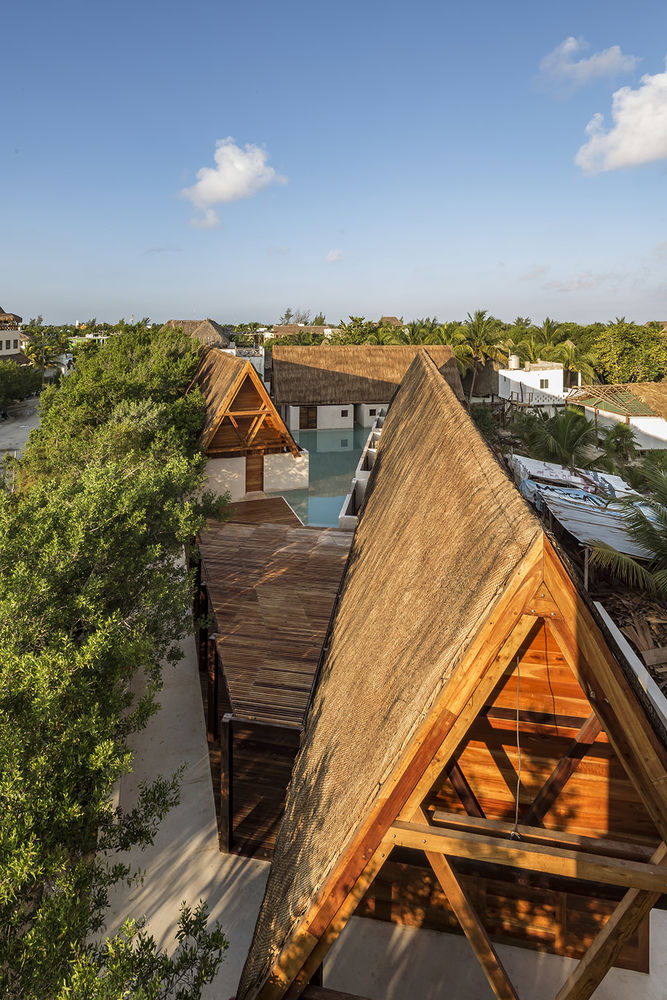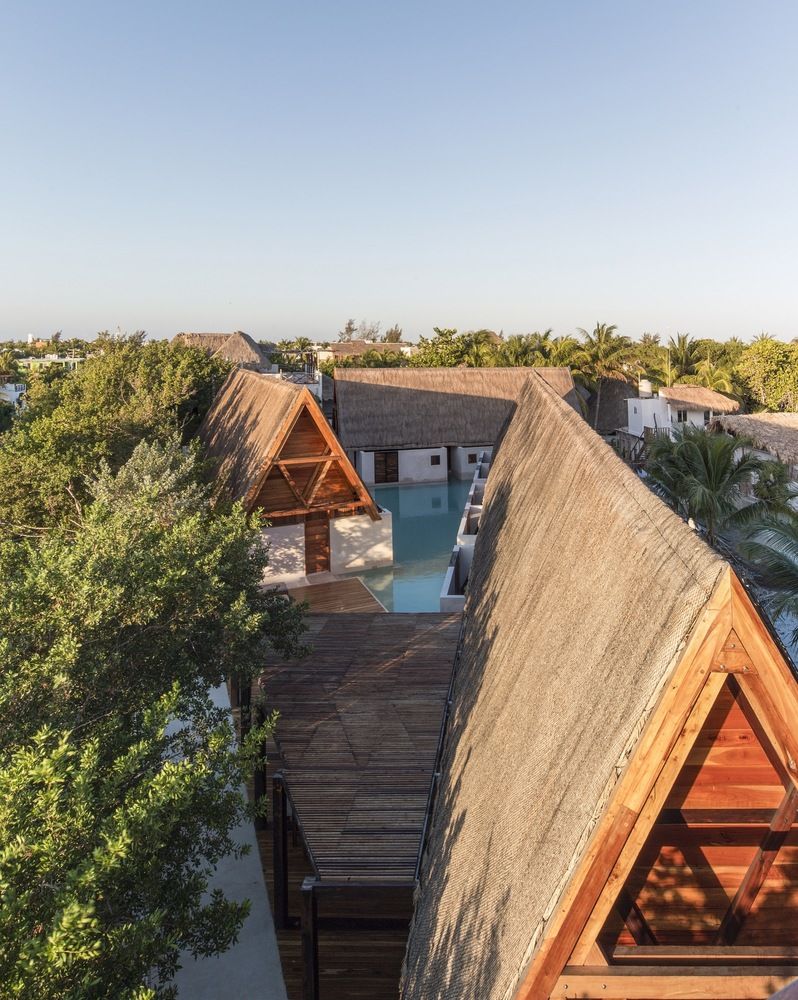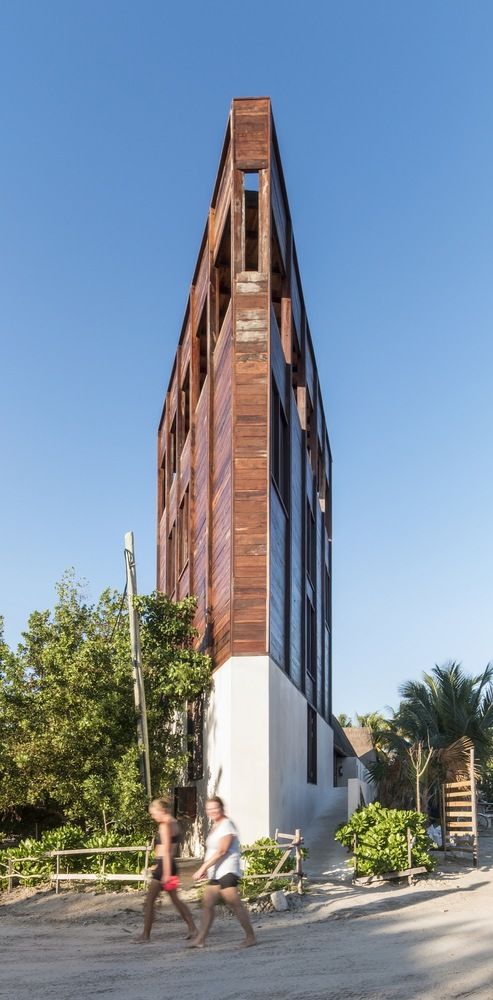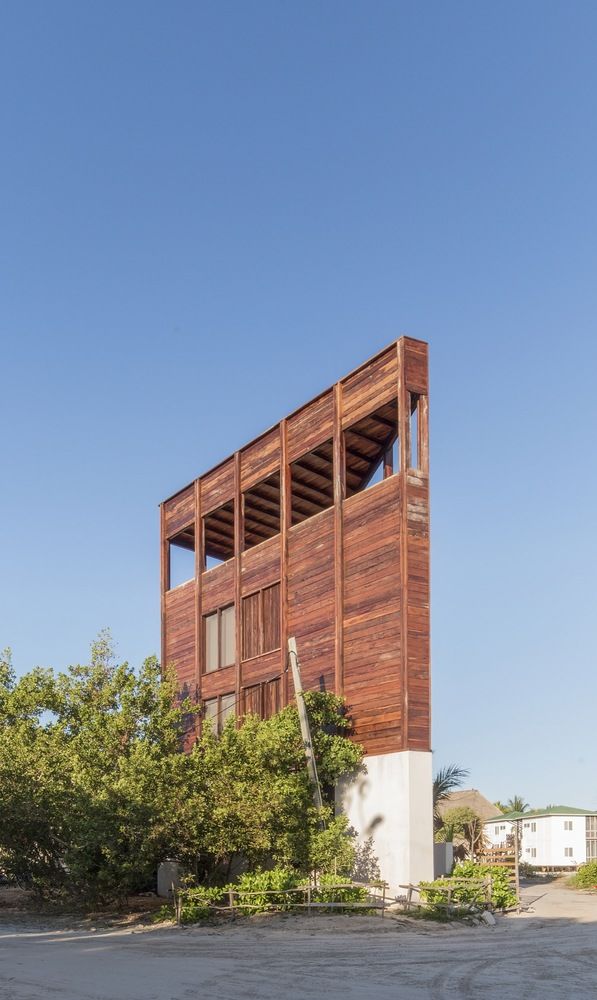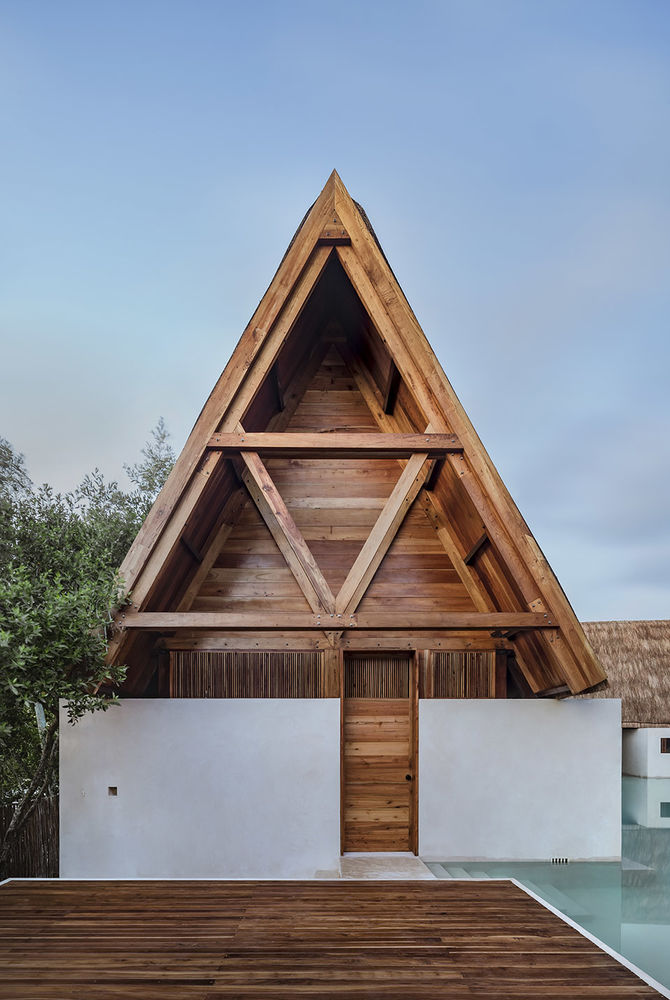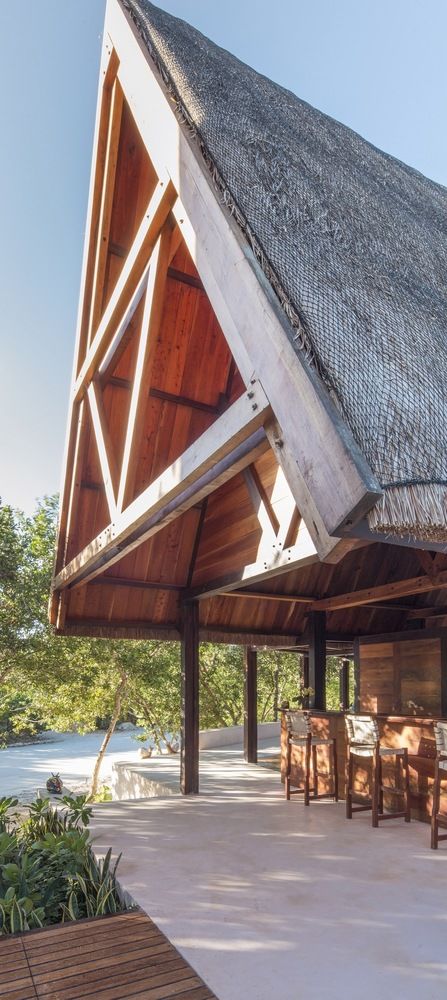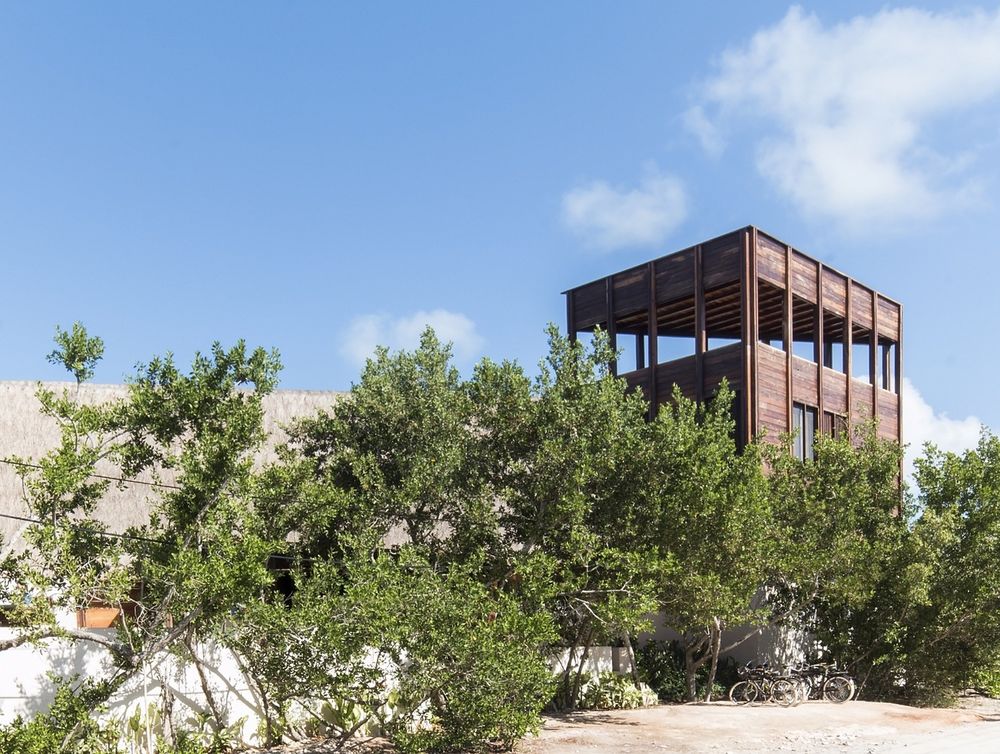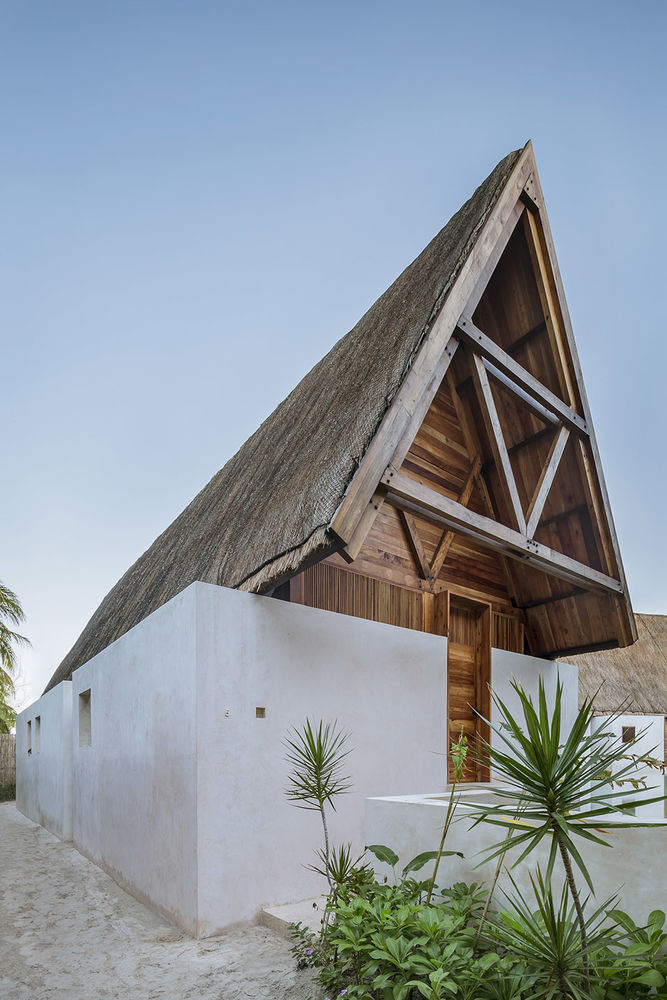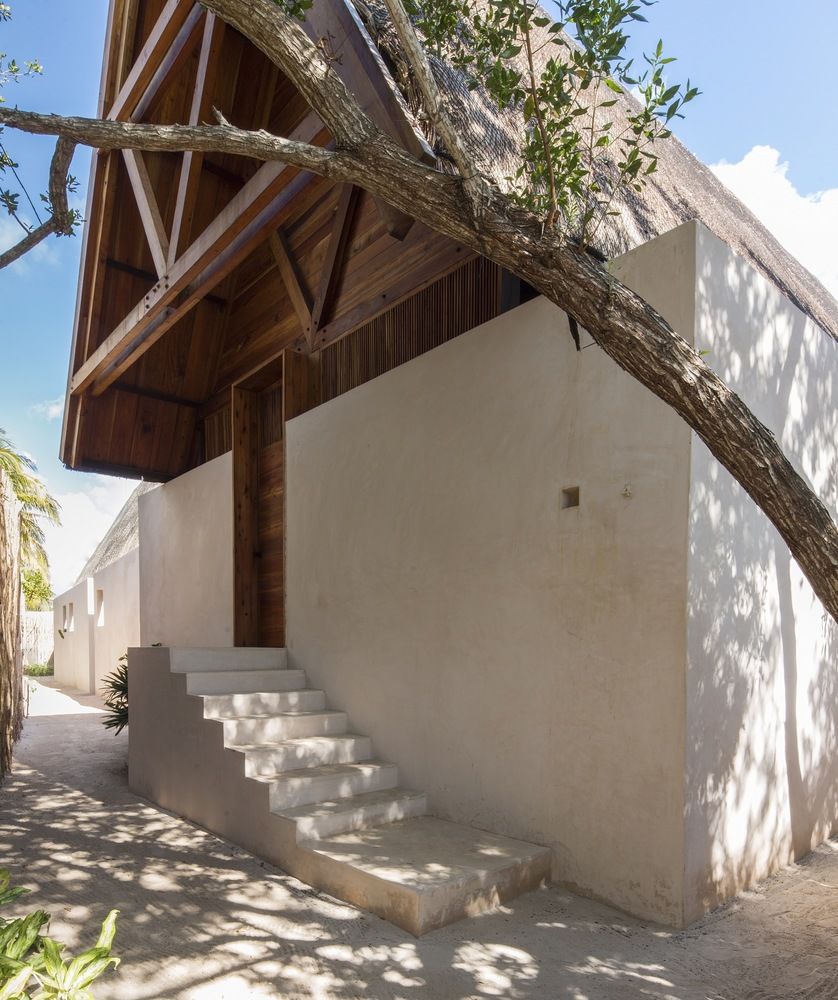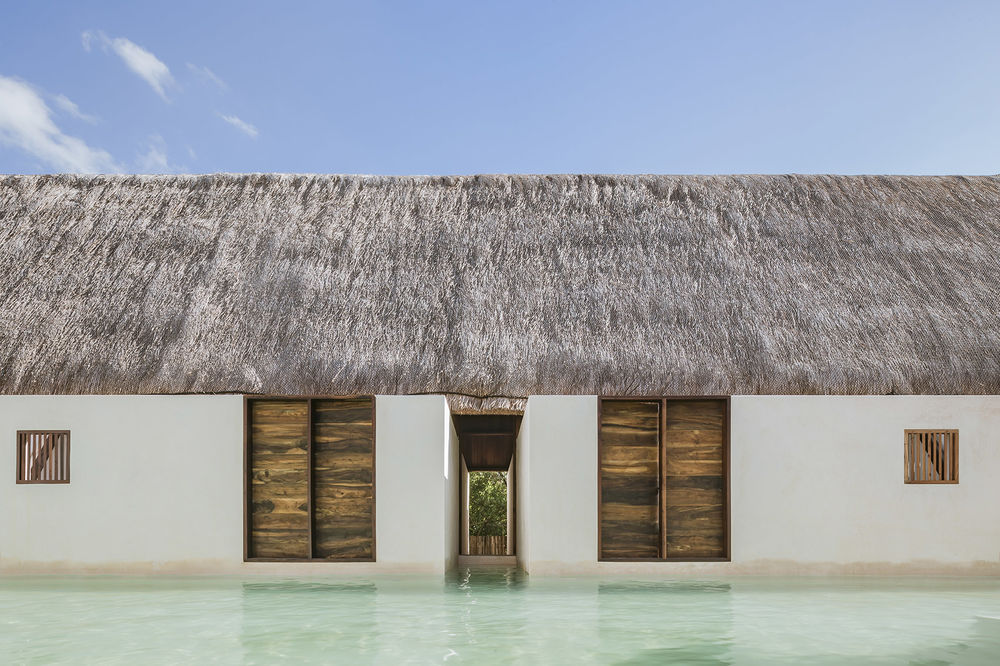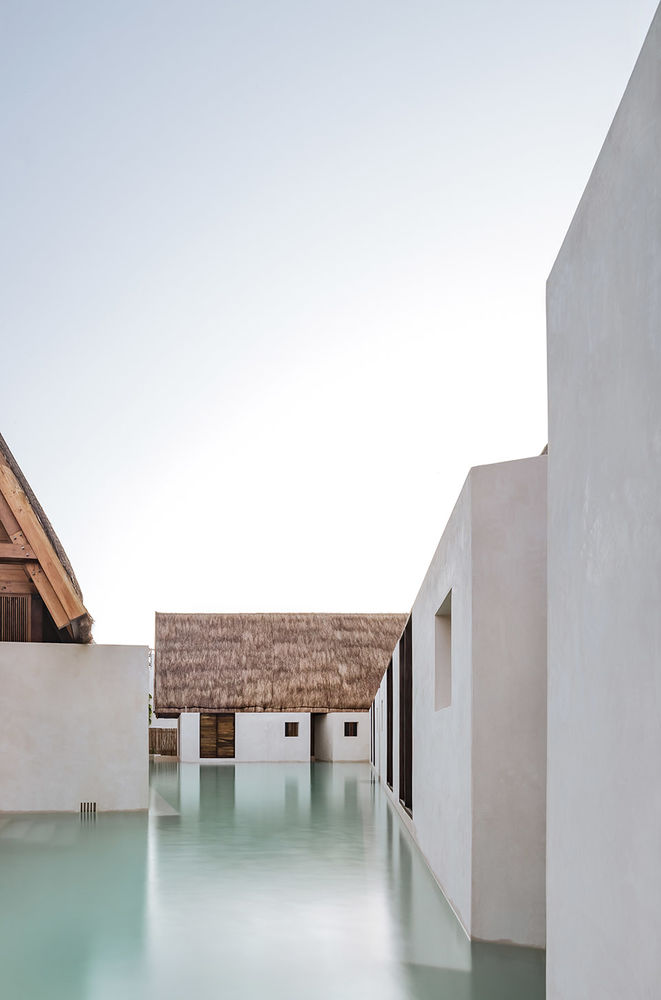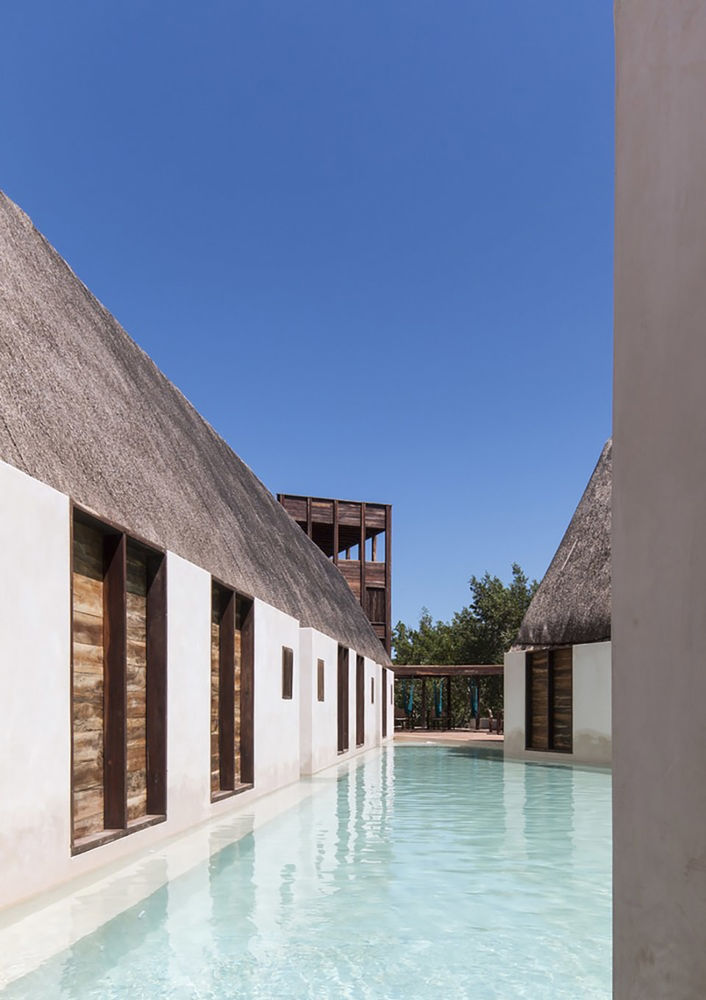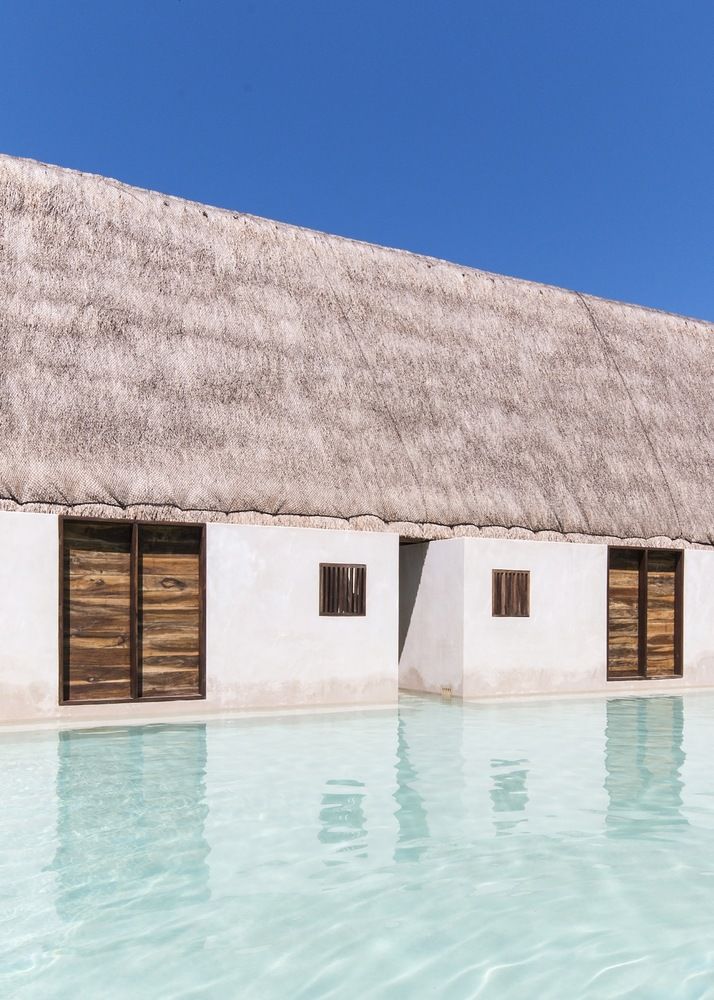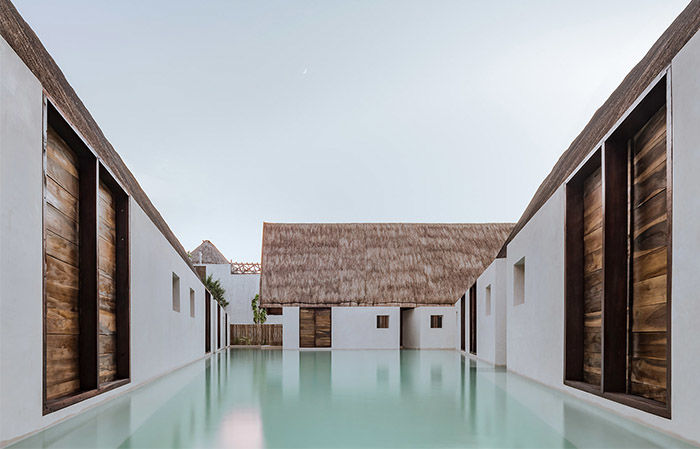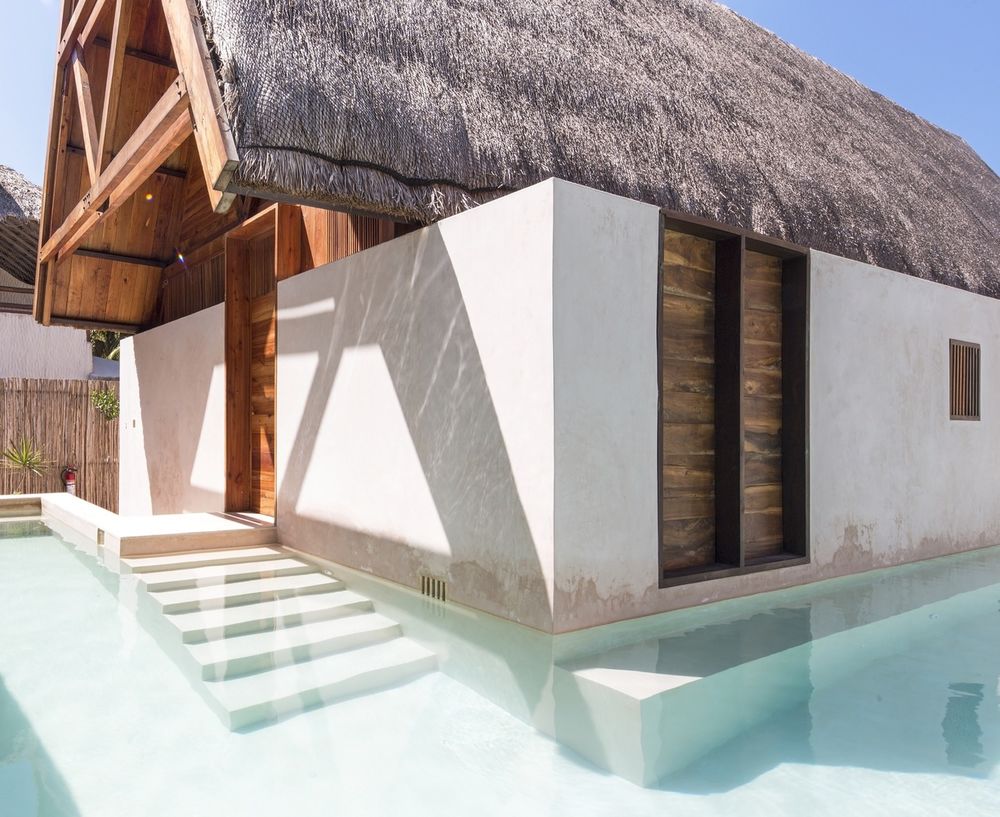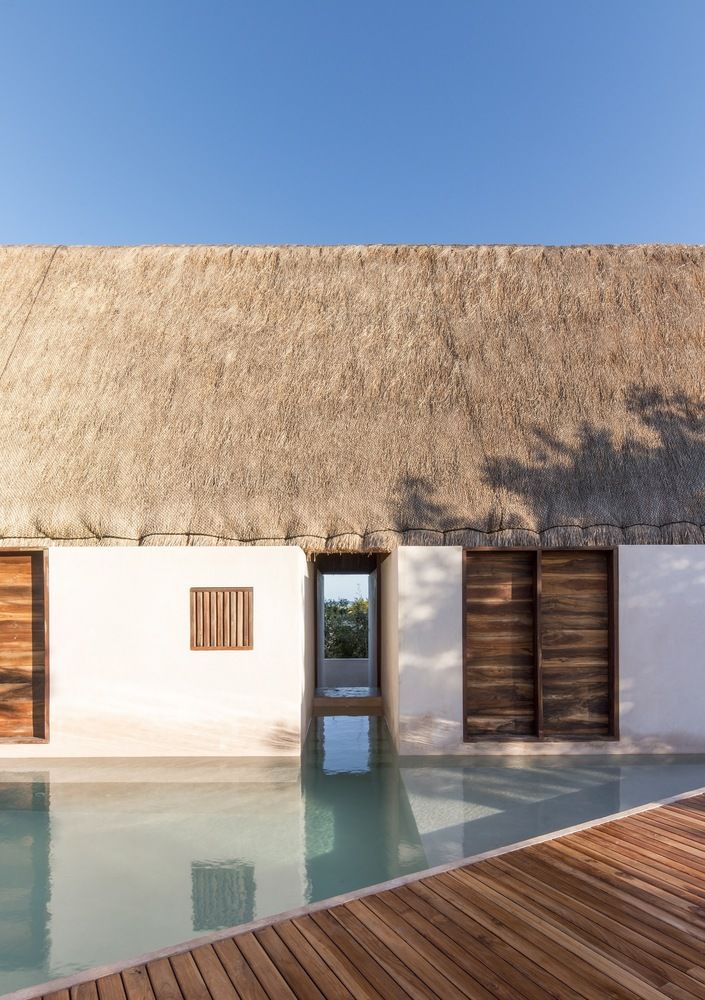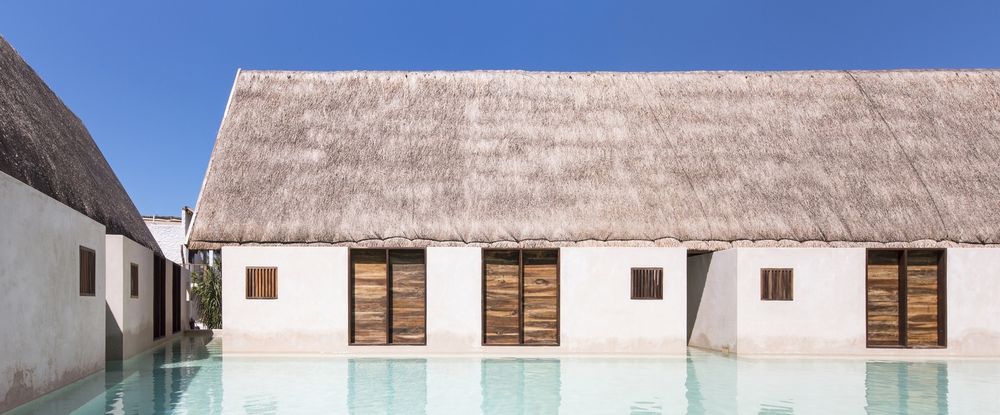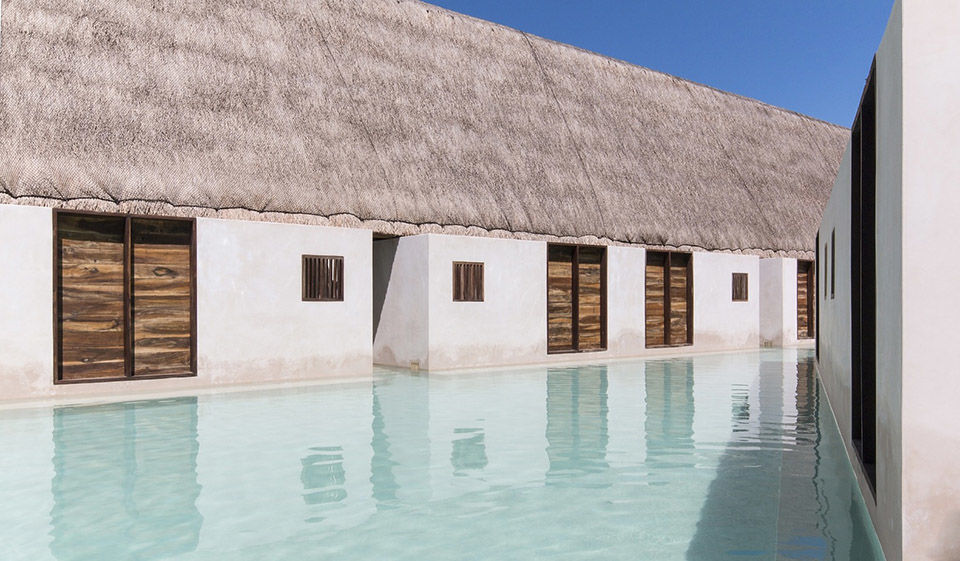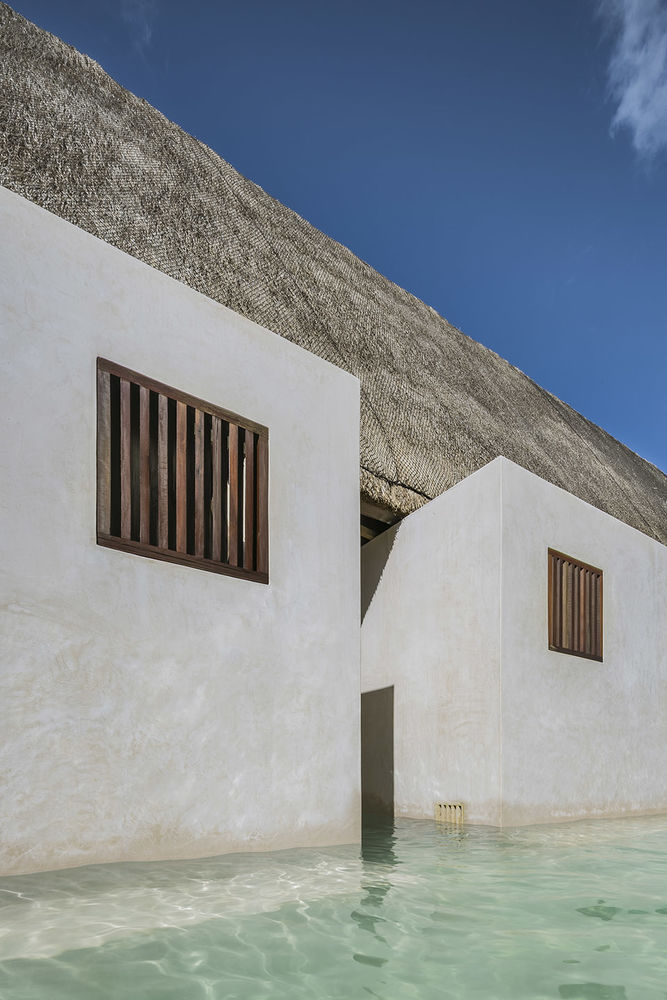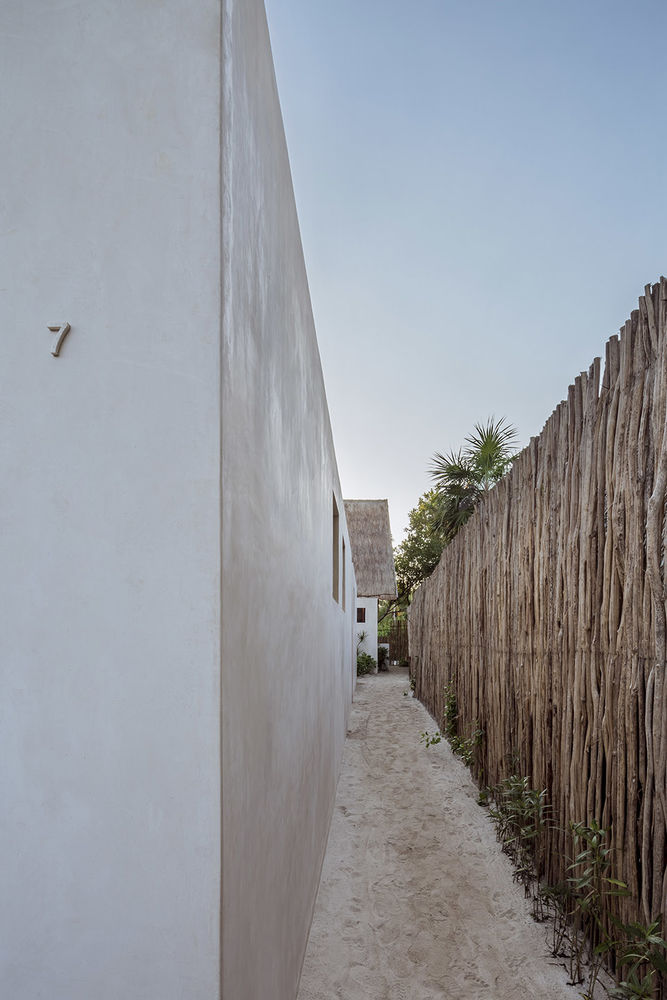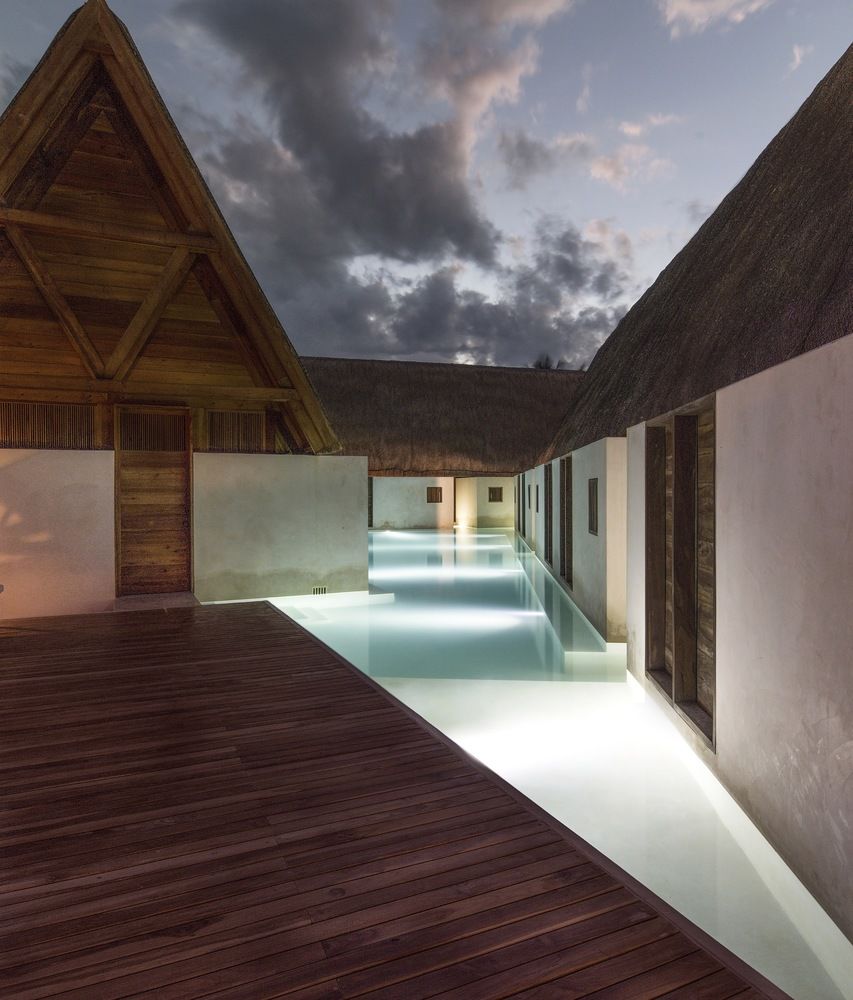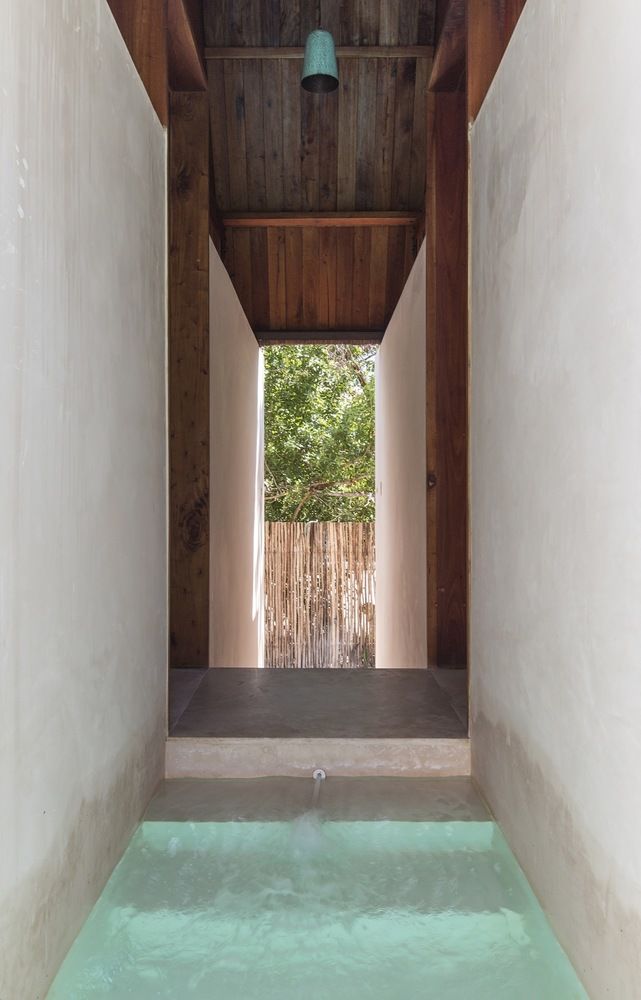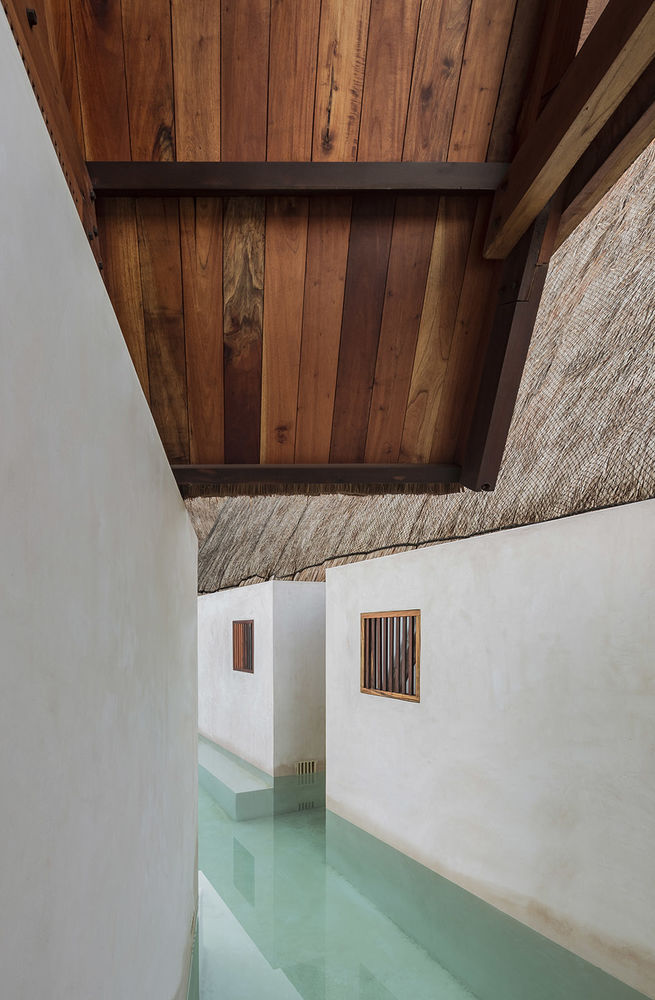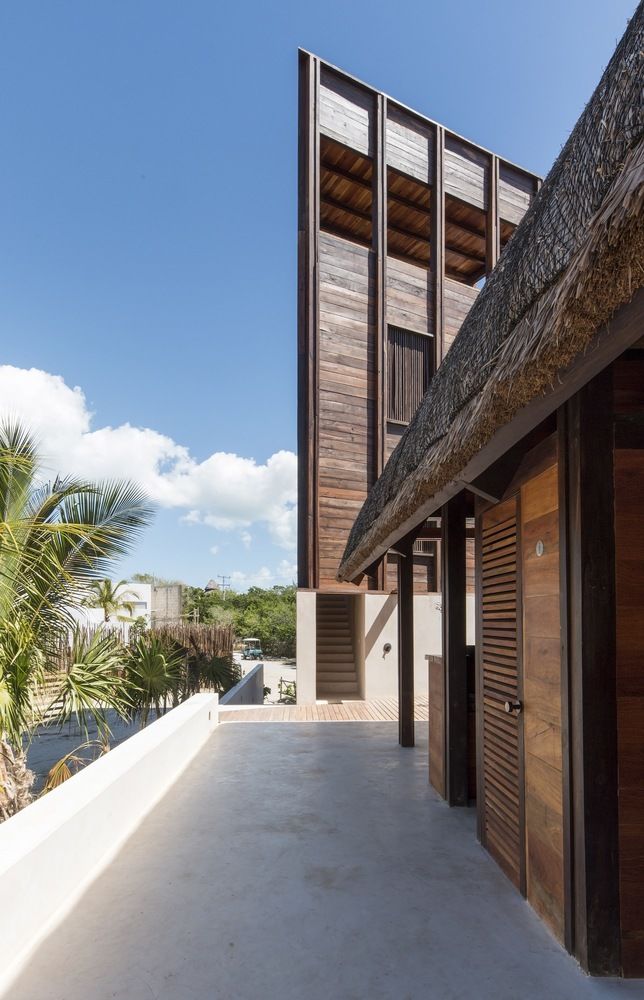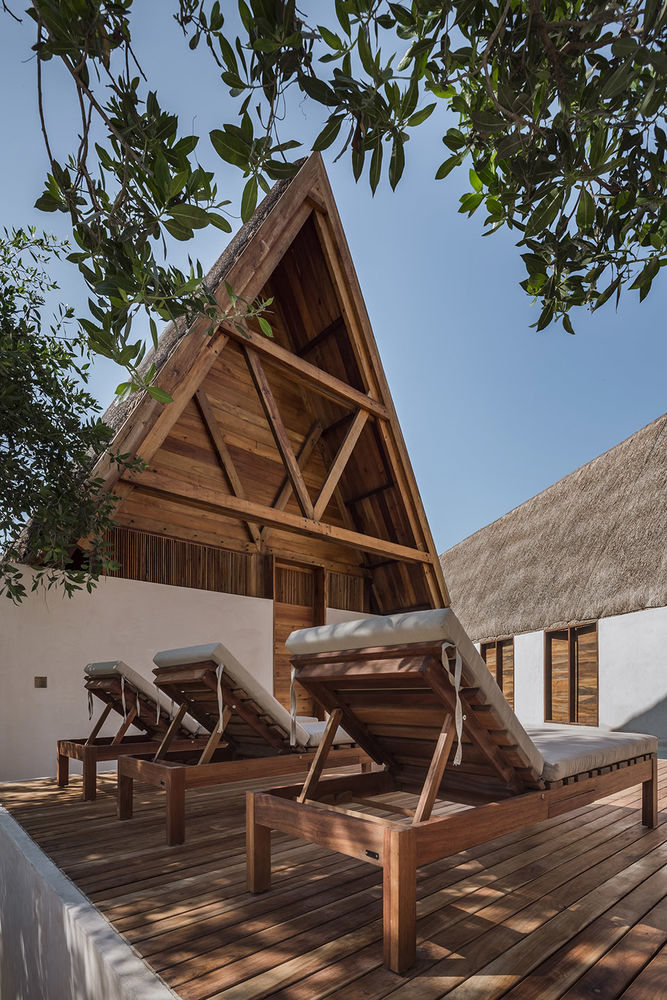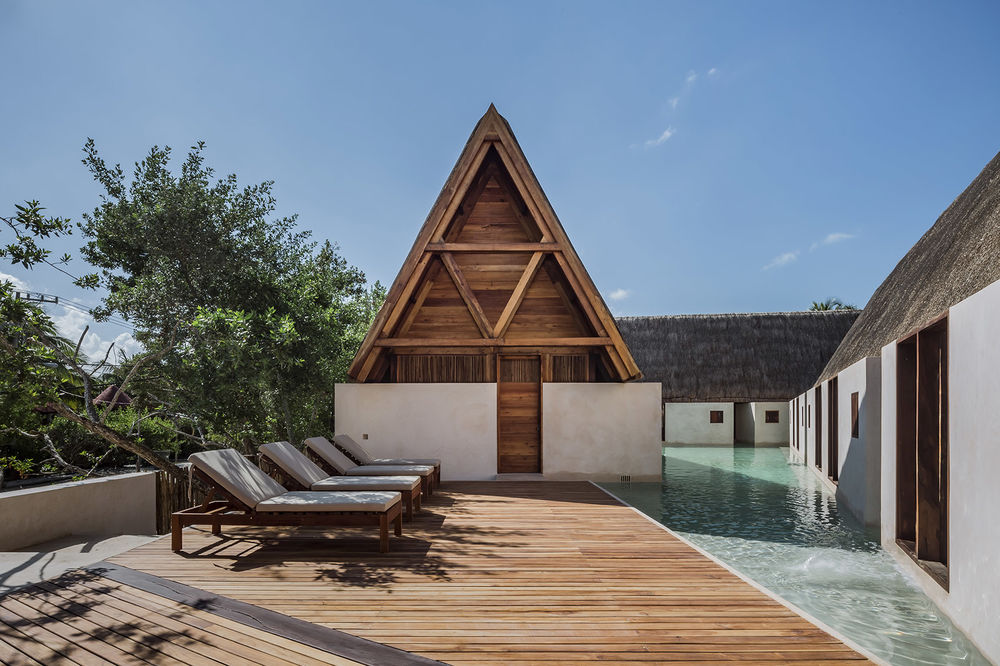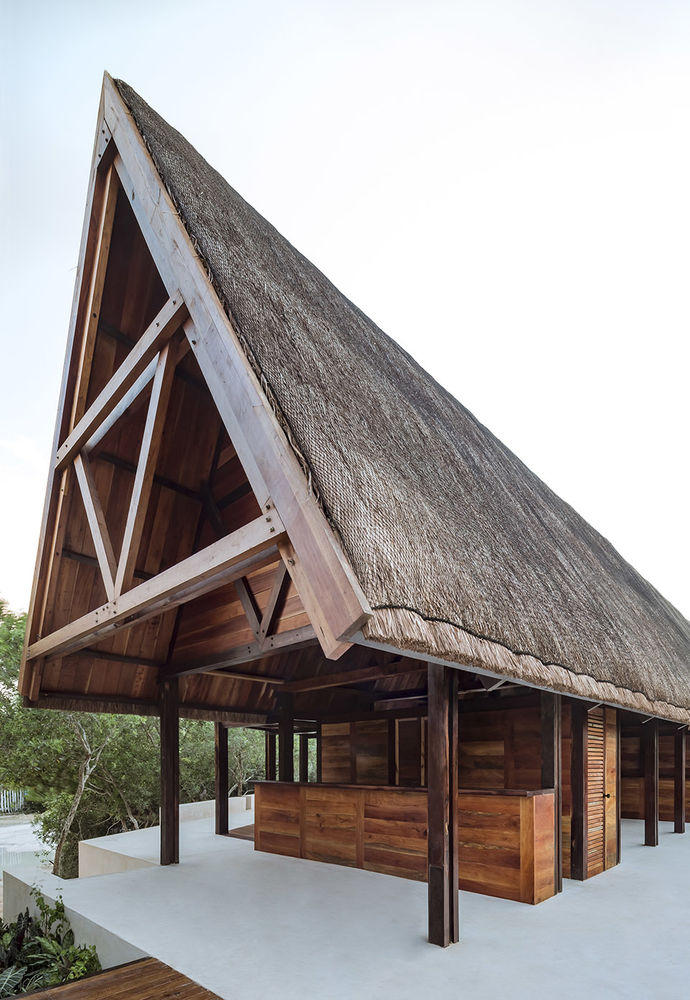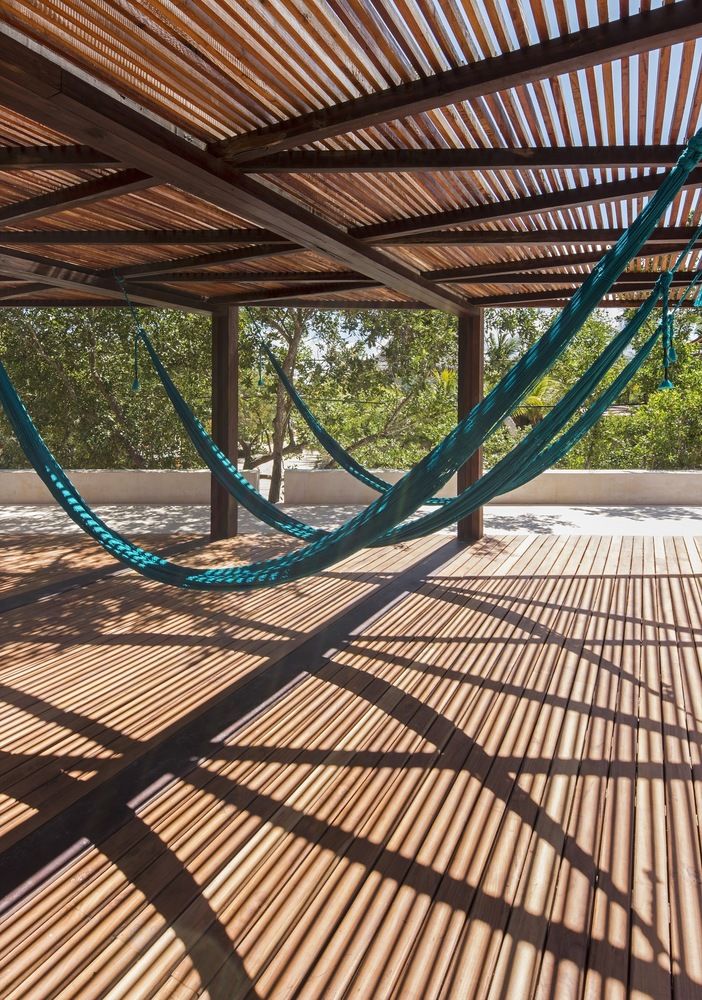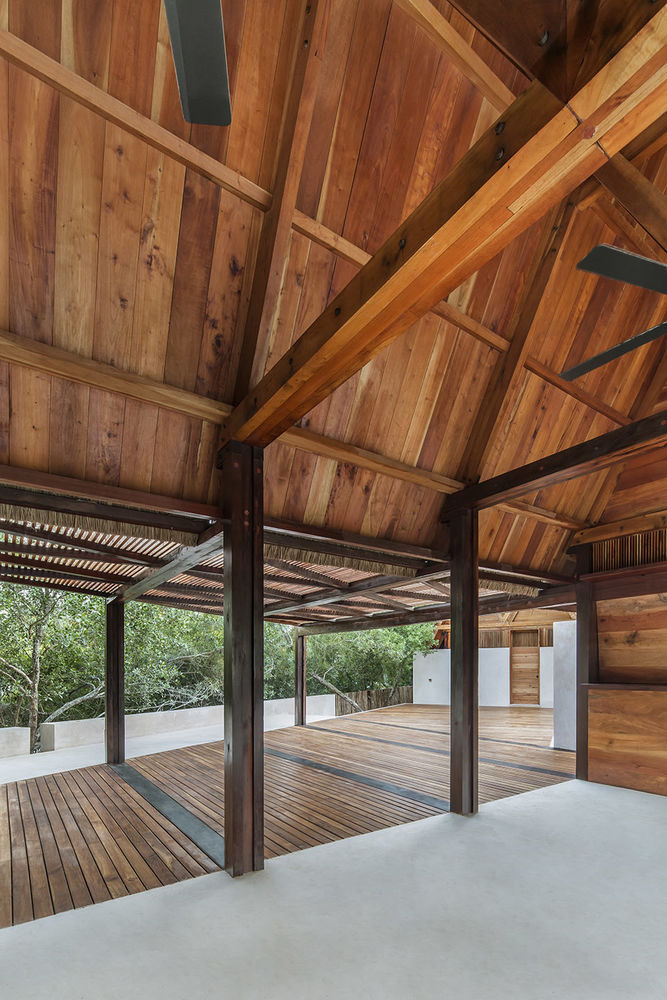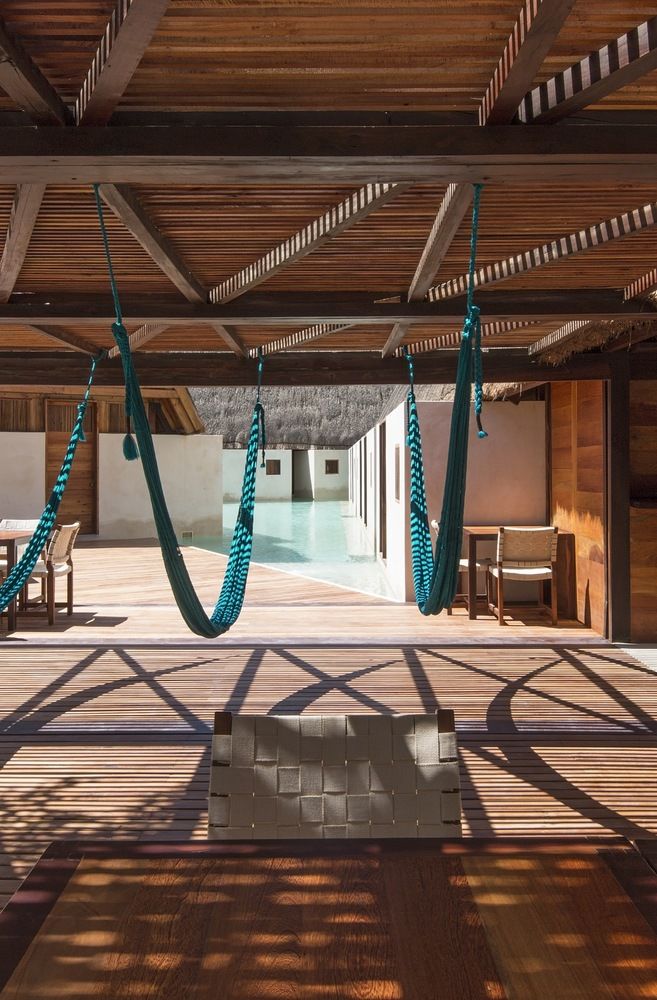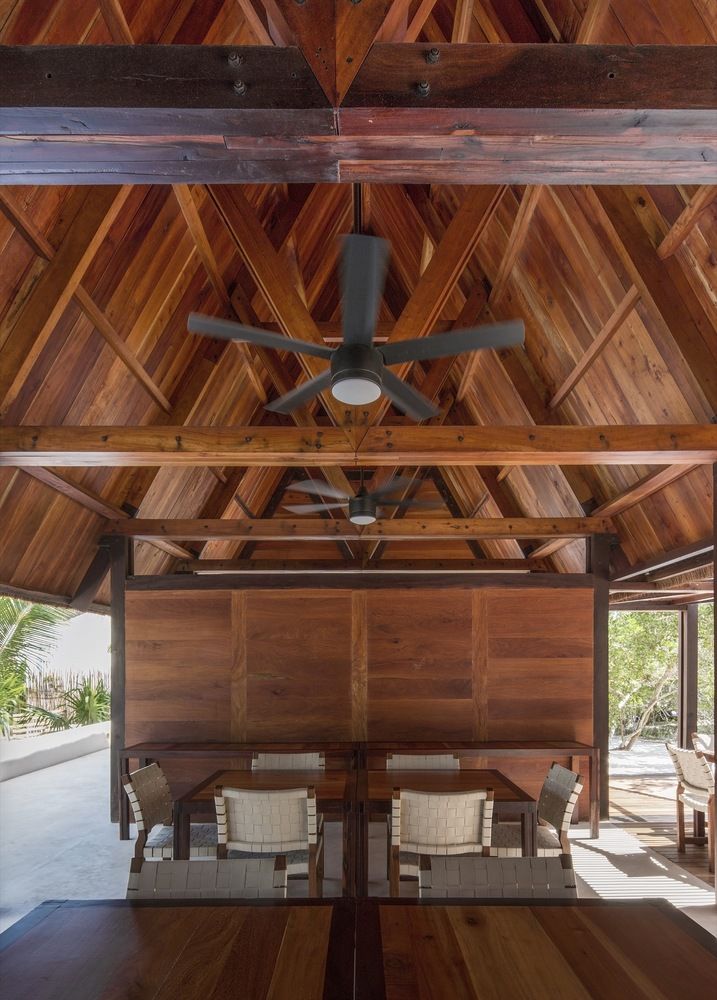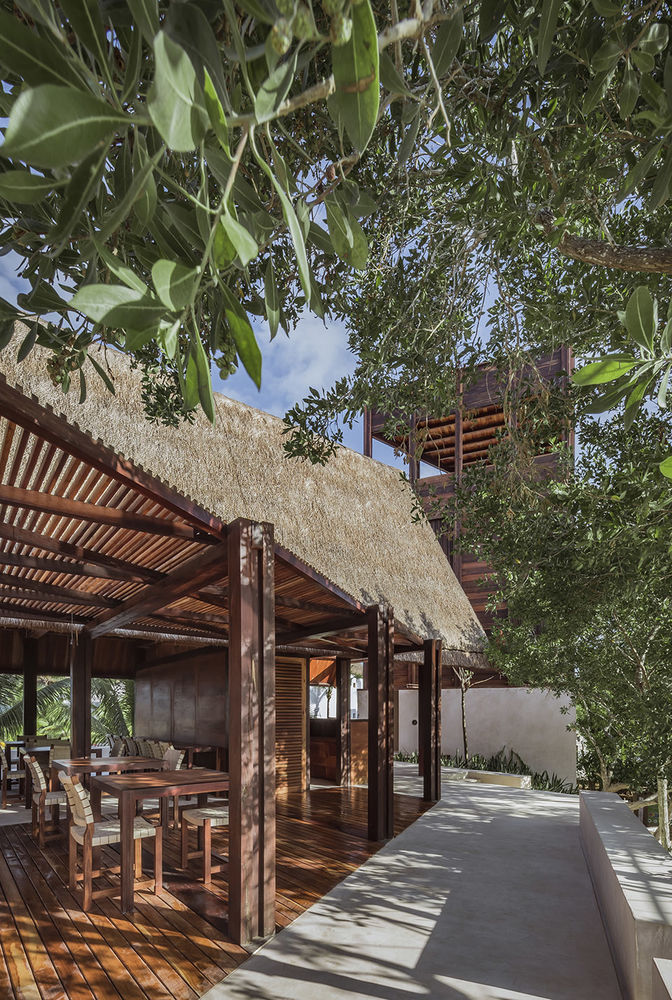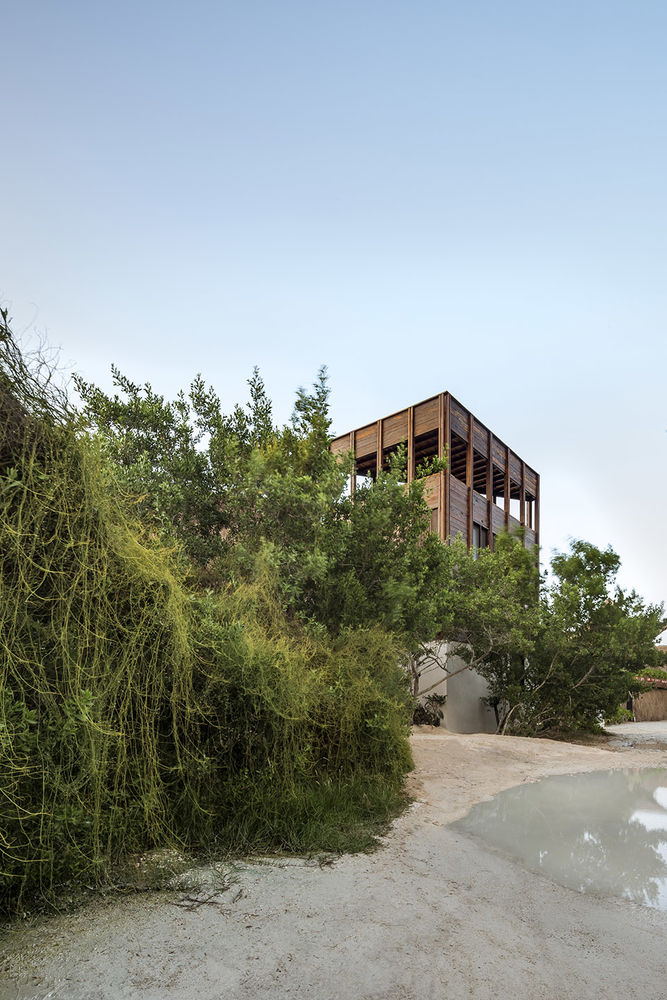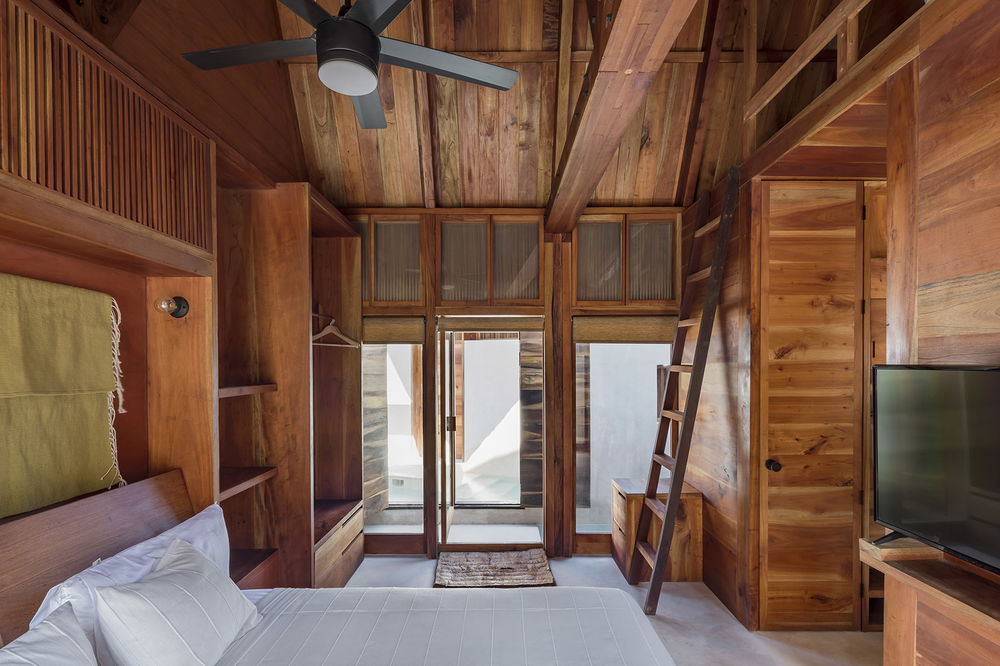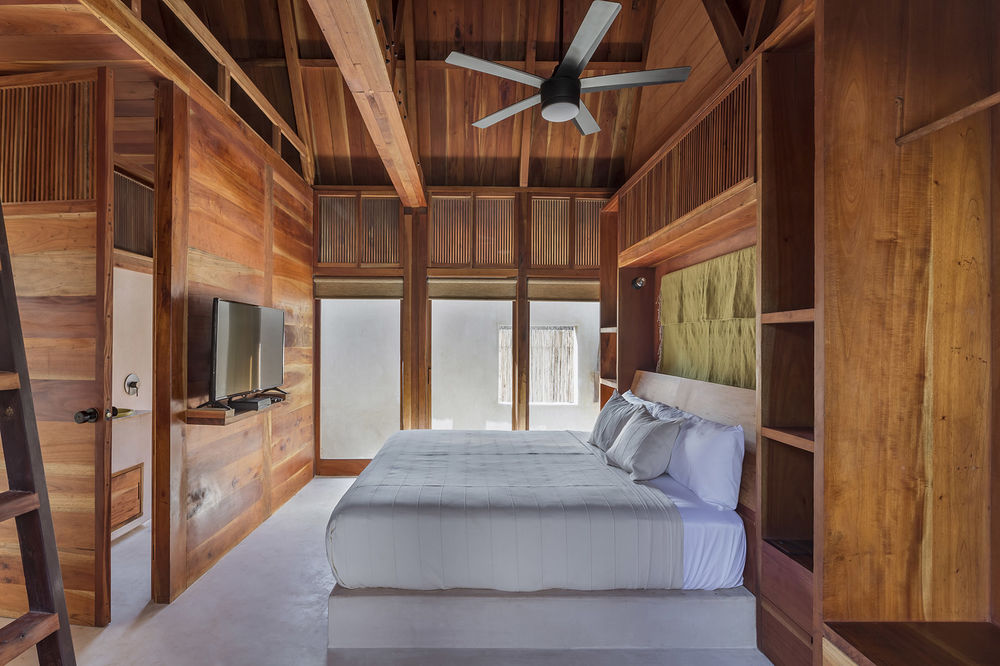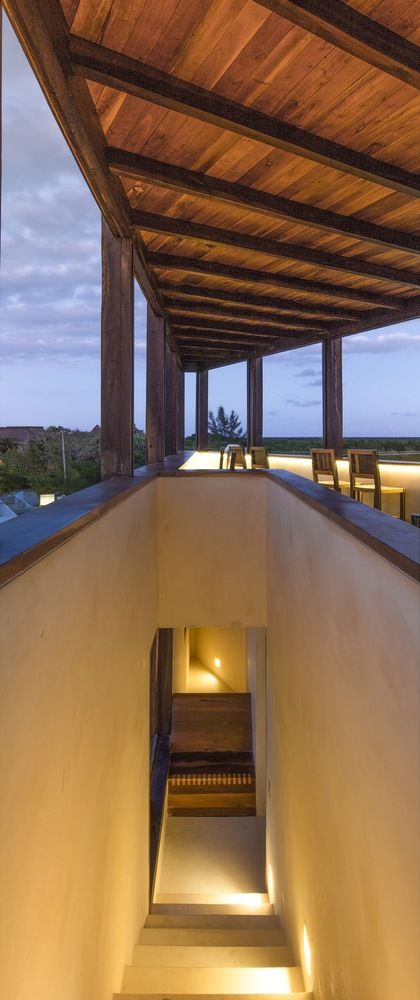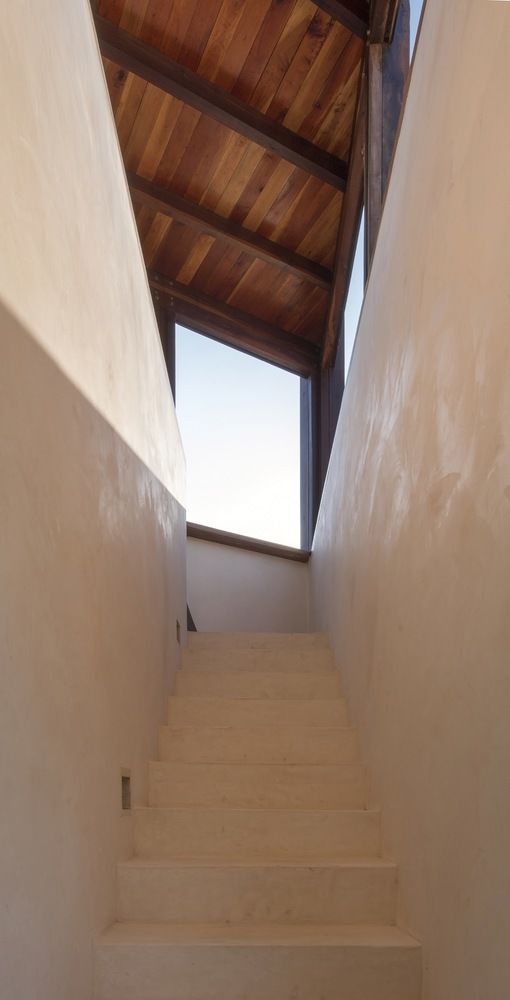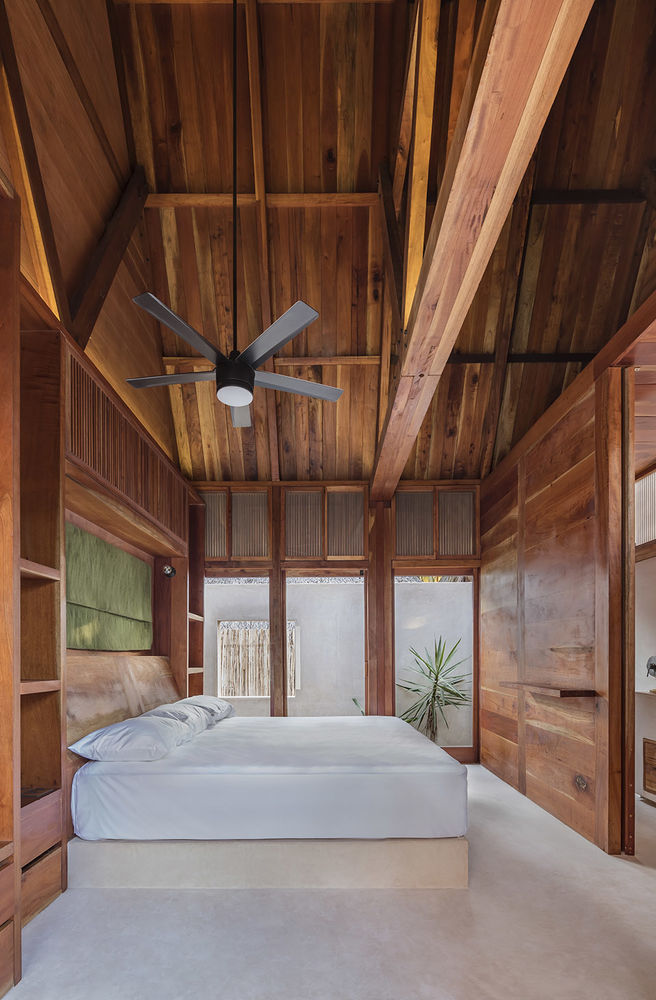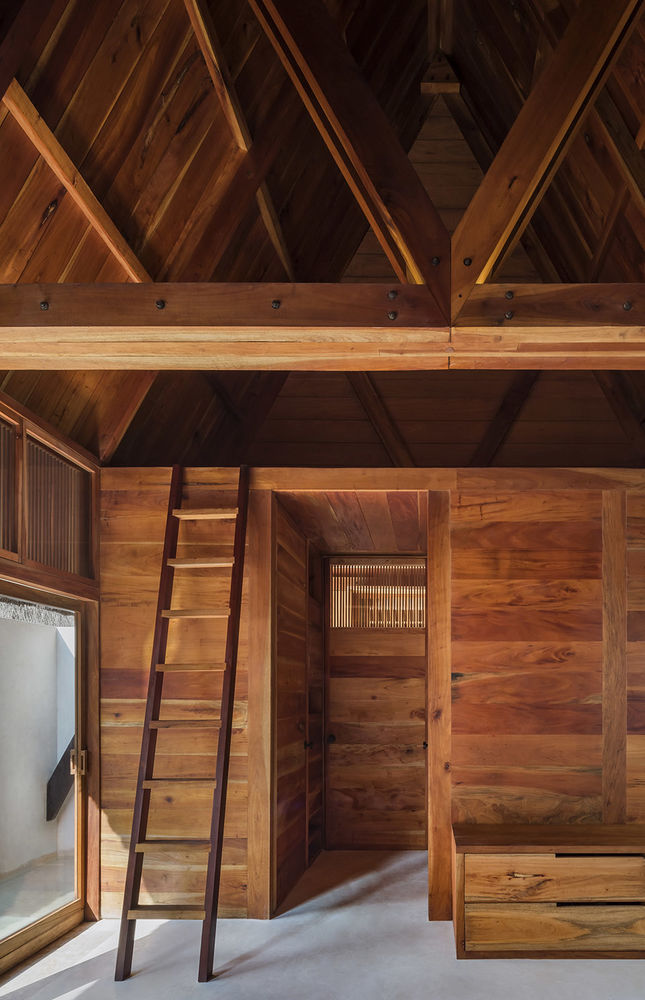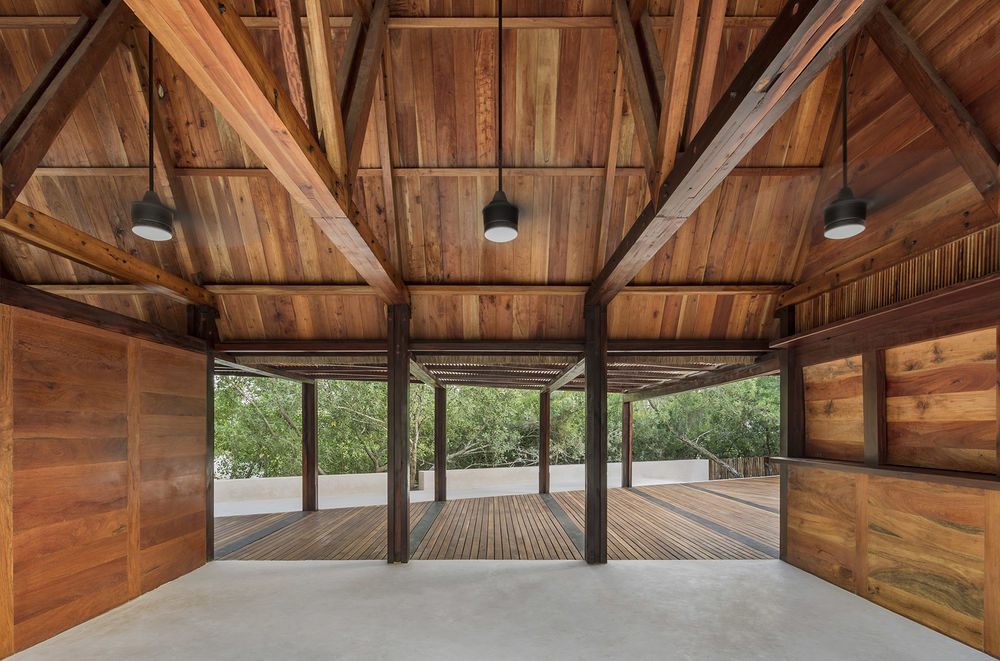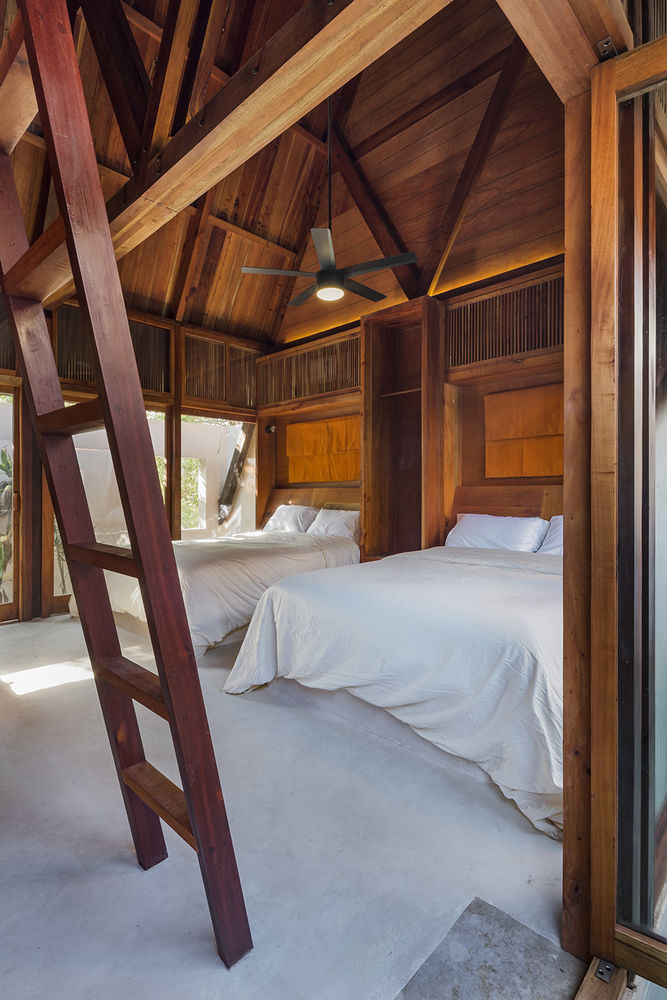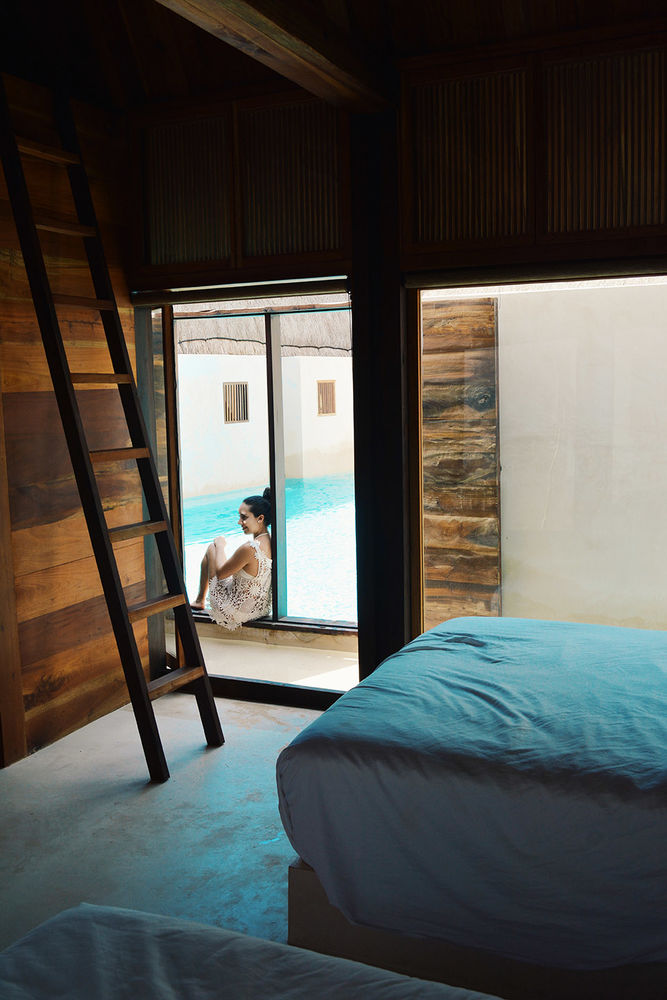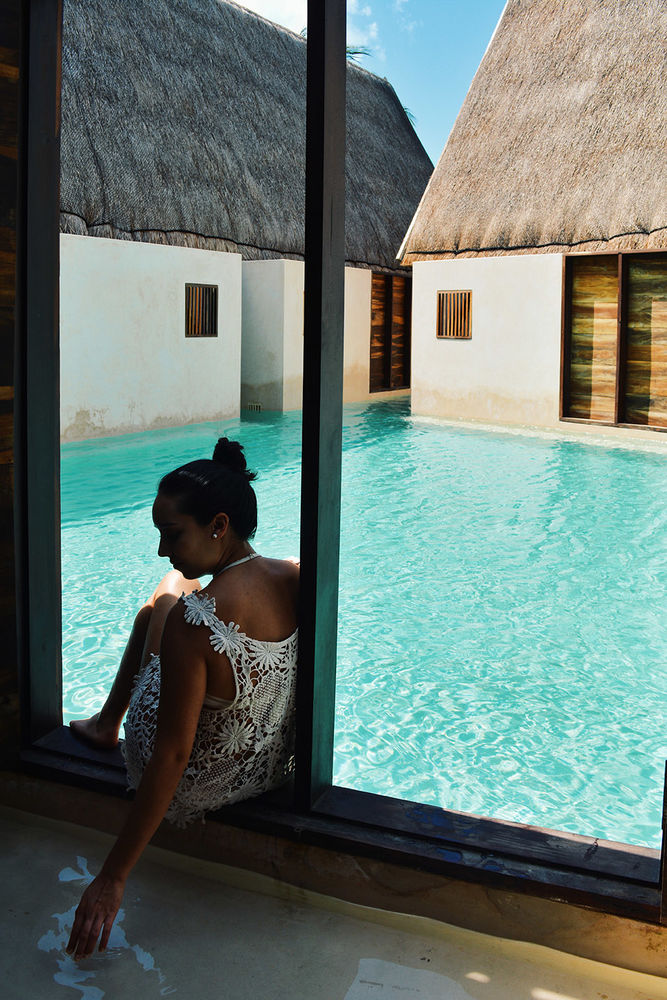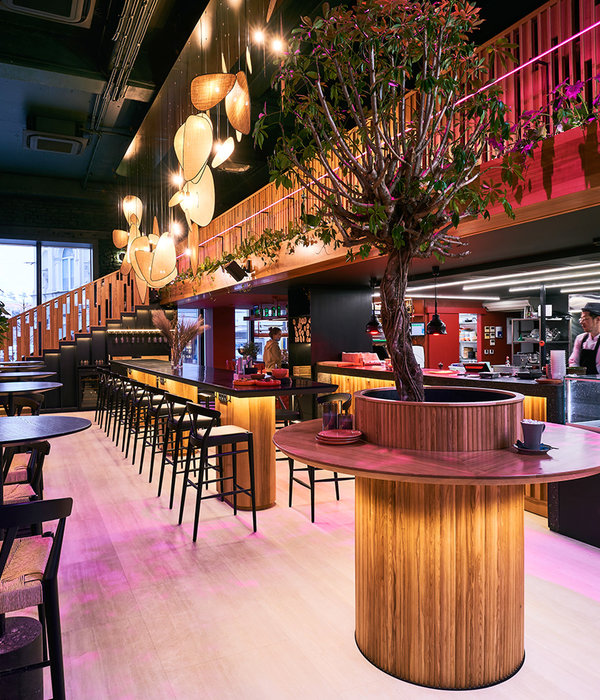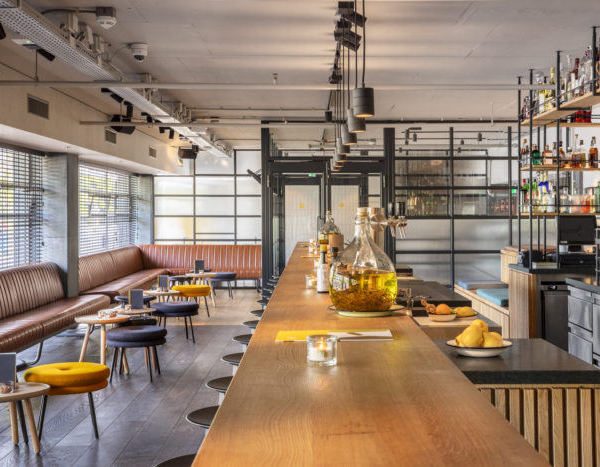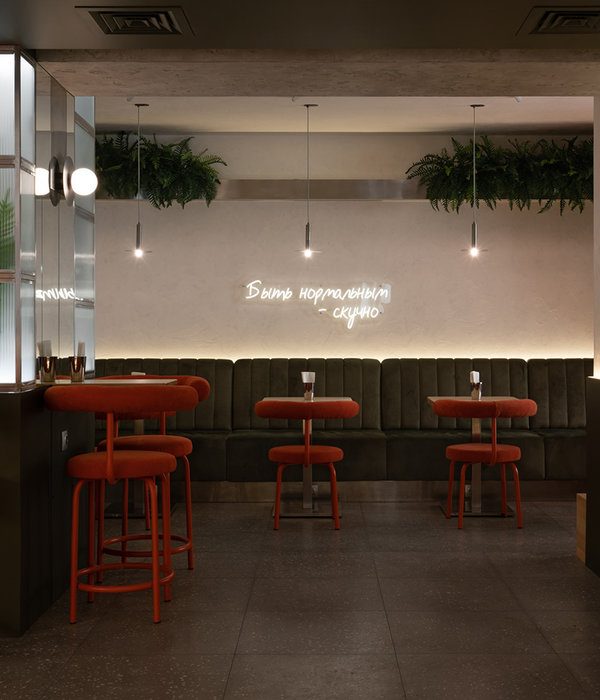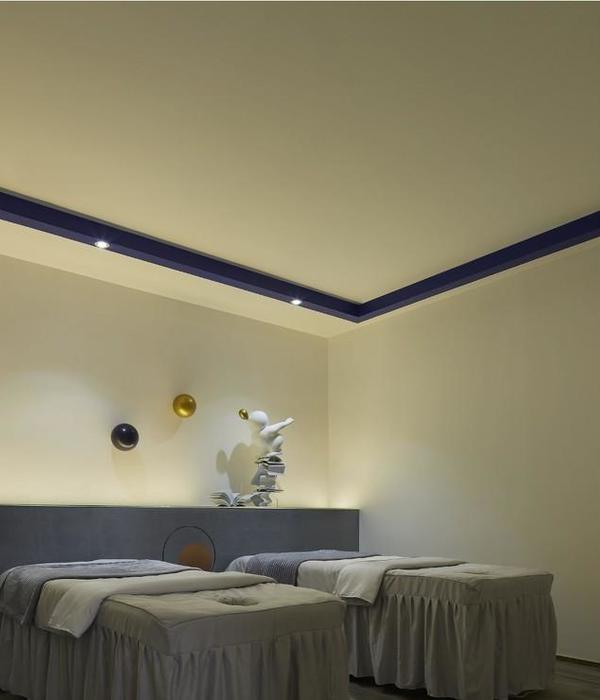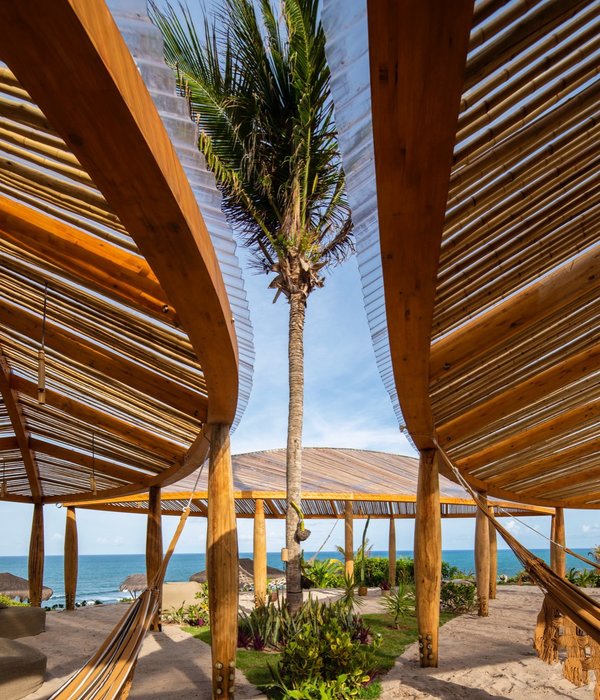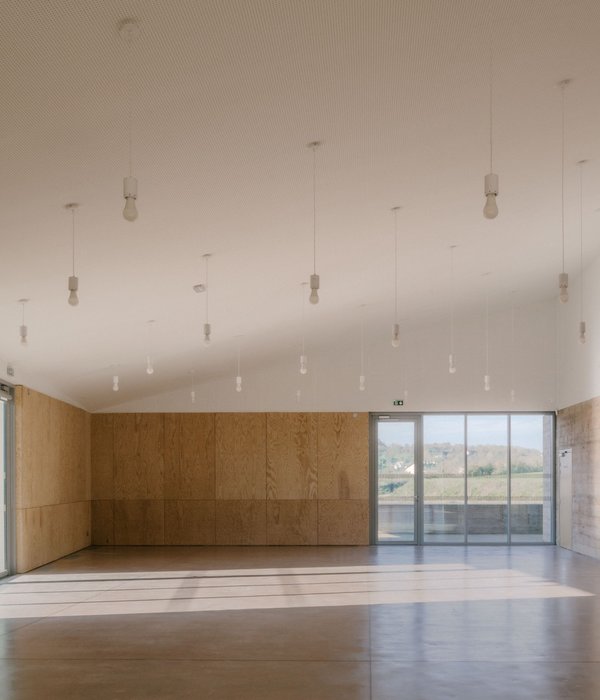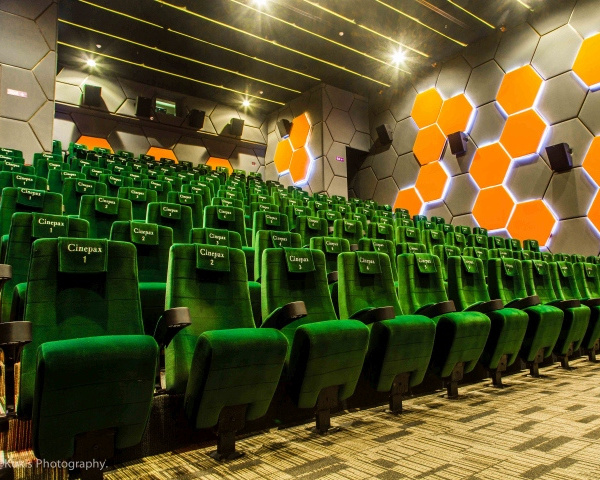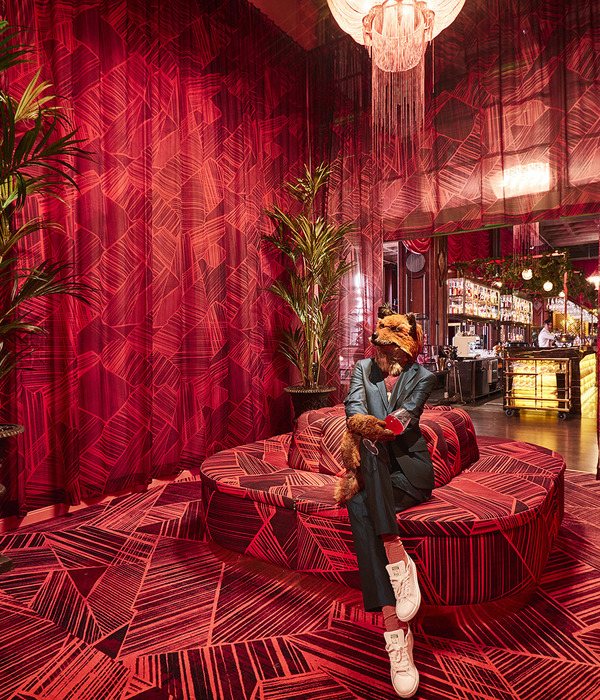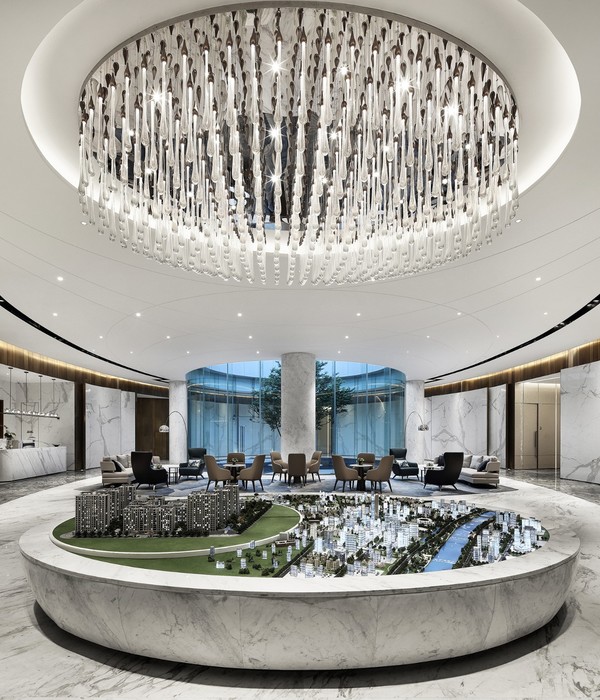Punta Caliza酒店,墨西哥 / ESTUDIO MACIAS PEREDO
Punta Caliza酒店是一间由旅行爱好者家庭创办的设计酒店,位于墨西哥的奥尔沃克斯岛。设计的初衷是让来到岛上的人们享受到家一样的居住体验。
Punta Caliza is a small, family-owned, design hotel in Isla Holbox by a family of travellers very much in love with their country. We want for you to enjoy, fall in love with the island, and feel at home.
▼酒店鸟瞰,aerial view

酒店与海滩之间有一段距离,坐落在靠近红树林沼泽边缘的一处并不临海的“剩余”场地。三个海湾为整个酒店创造了一种连贯的水上景观。三个巨大的绿色屋顶覆盖在相互独立的房间之上,并以这种方式延续了墨西哥palapa(一种简陋的草棚)建筑的简洁结构。这种源自传统玛雅人住宅的古老逻辑使得墙壁不再承担结构性的作用,“被解放”的墙体为被水环绕的景观提供了可能。被水淹没的庭院某种程度上提醒了人们对岛上红树林沼泽的关注。用柏木建造的“草屋”散发着芳香的气息,为每个房间赋予了自然和舒适的氛围。
▼轴测图,axon
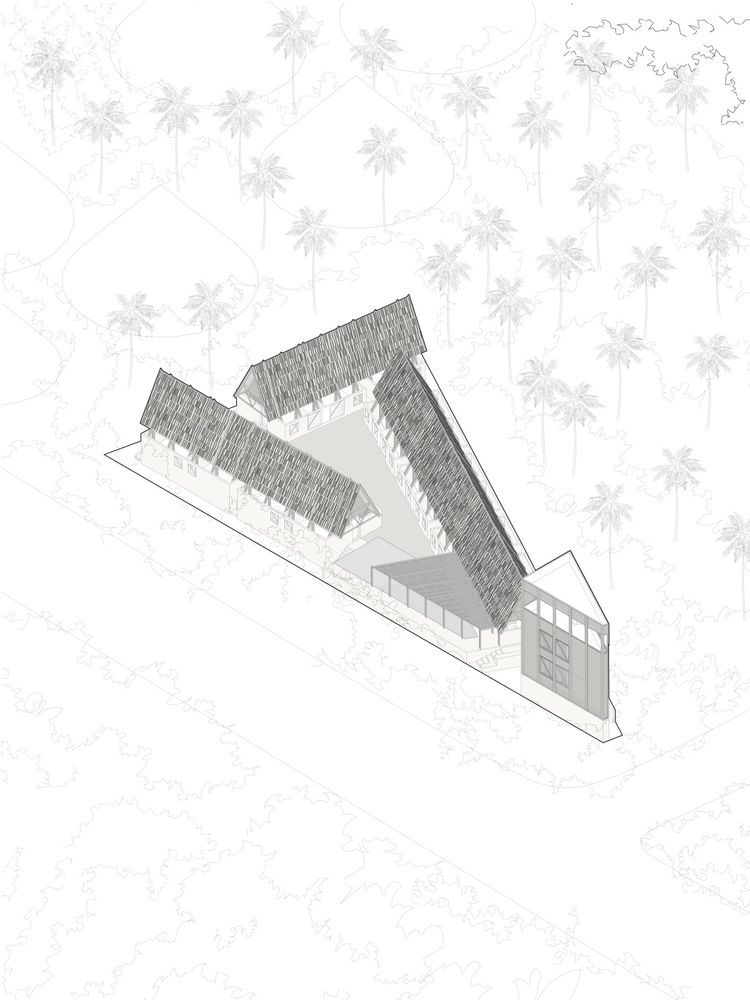
The beach is some distance away. On a “leftover” space with no beach frontage and close to the boundary of the mangrove swamps, where construction is prohibited, the three bays of this construction serve to create an aquatic landscape all its own for this hotel. Three large green roofs contain the rooms, while remained isolated from each other. In this way, the palapa retains its clear and simple construction. This archaic logic, learned from the traditional Mayan house, allows the walls to be freed from their structural role. With the walls thus liberated, the room is isolated by the water, which flows in from the flooded courtyard, in a brief reminder of the mangrove swamps that cover Holbox Island. To be able to rest beneath a palapa built from solid, aromatic cedar wood and experience it as a space is the premise of all the rooms, which is why a second floor is precluded.
▼三个海湾为整个酒店创造了一种连贯的水上景观,the three bays of this construction serve to create an aquatic landscape all its own for this hotel

▼被水淹没的庭院,water flows in from the flooded courtyard
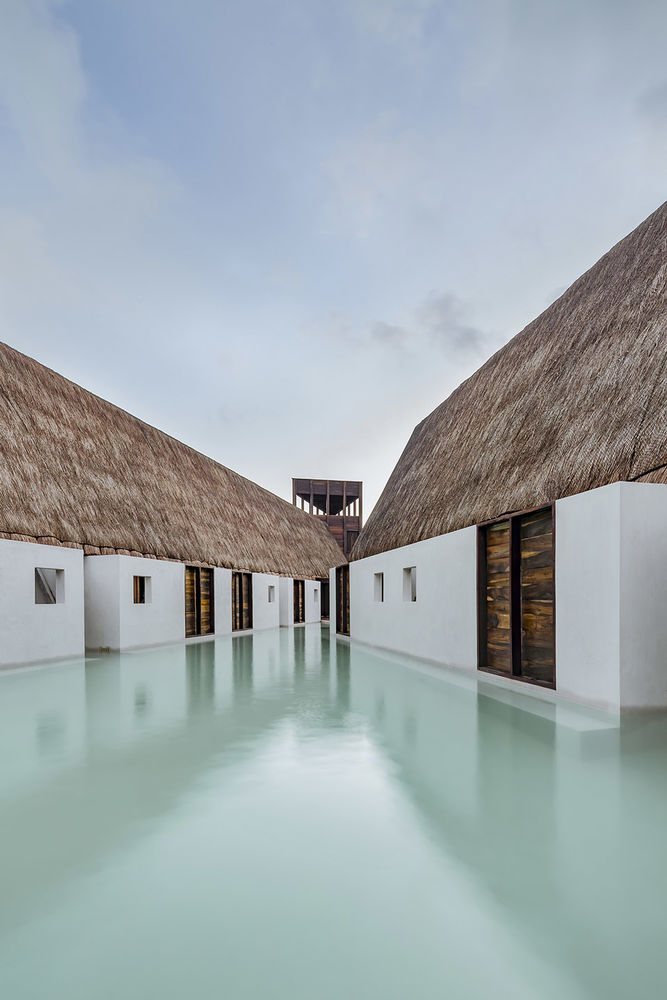

▼水道,water lanes
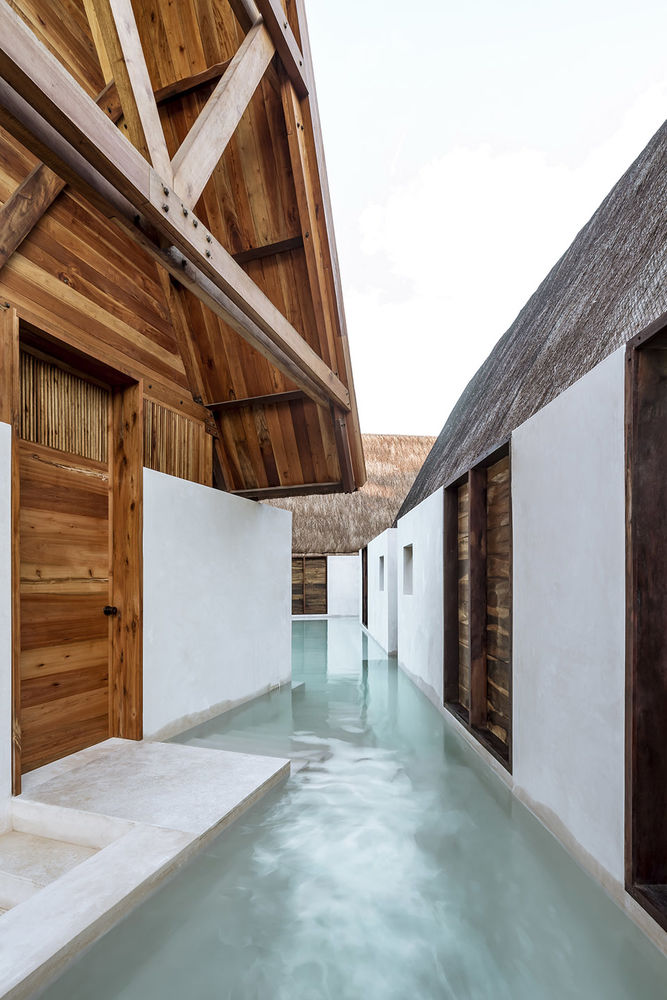
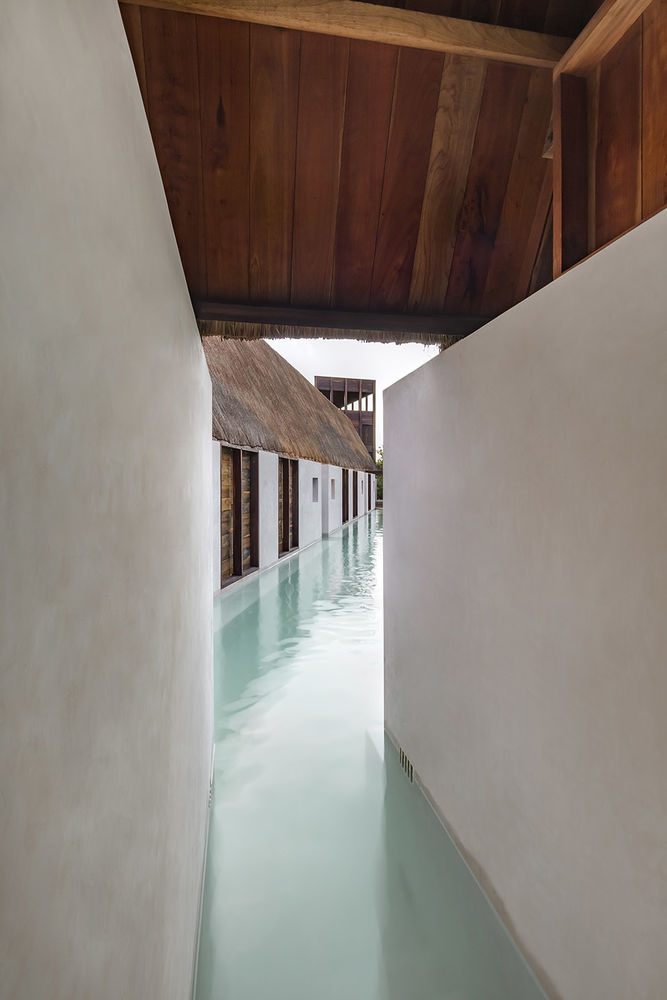
▼从花园望向水院,view to the flooded yard from the garden
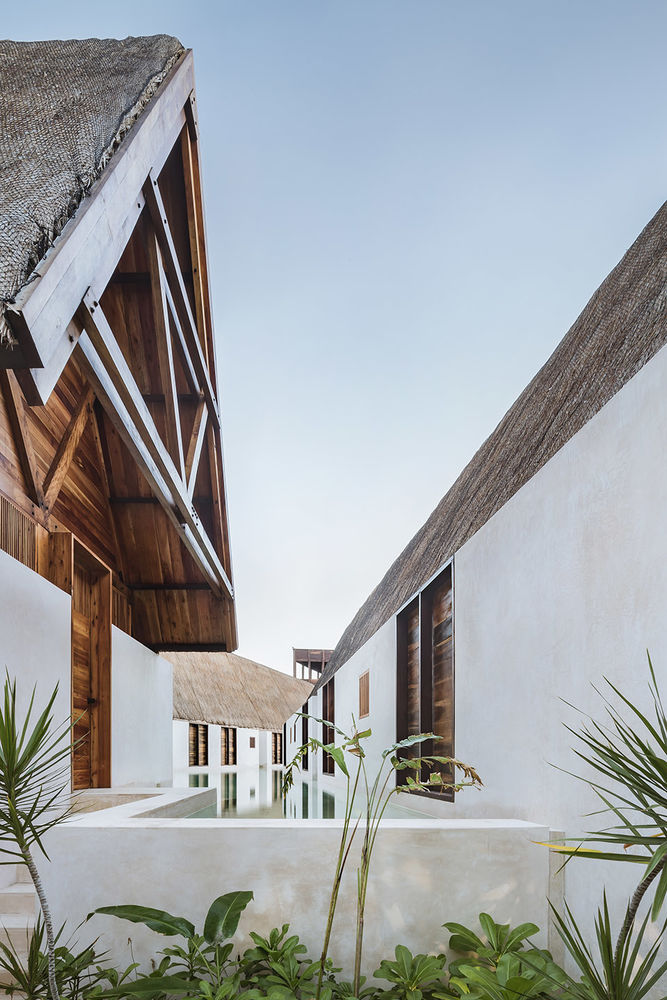
▼木制平台,wooden deck
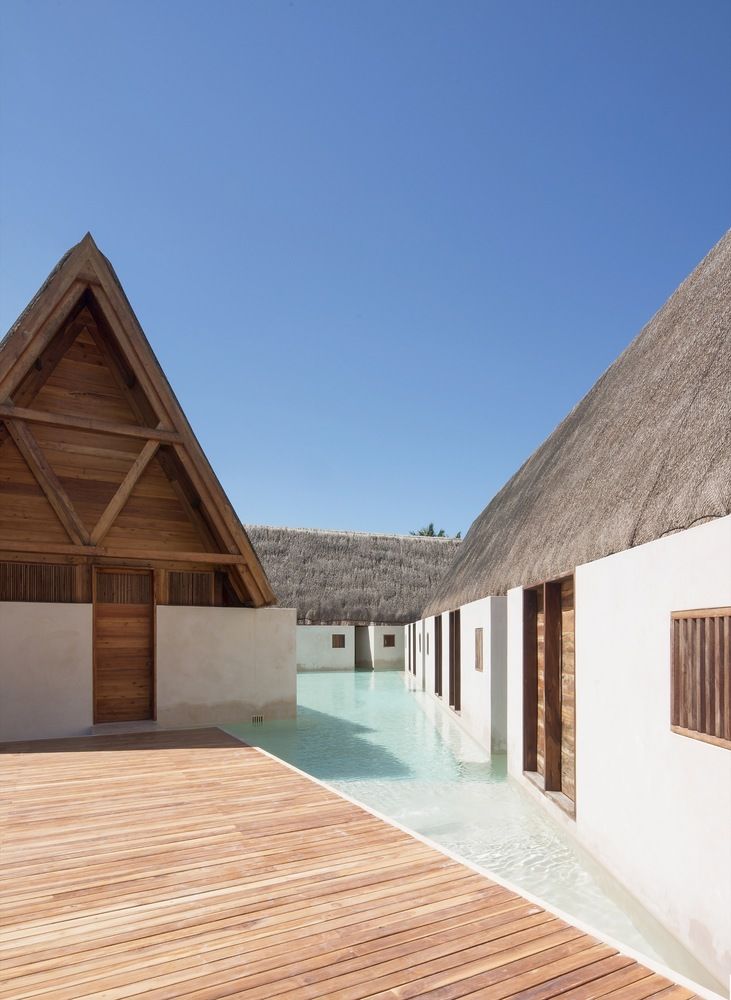
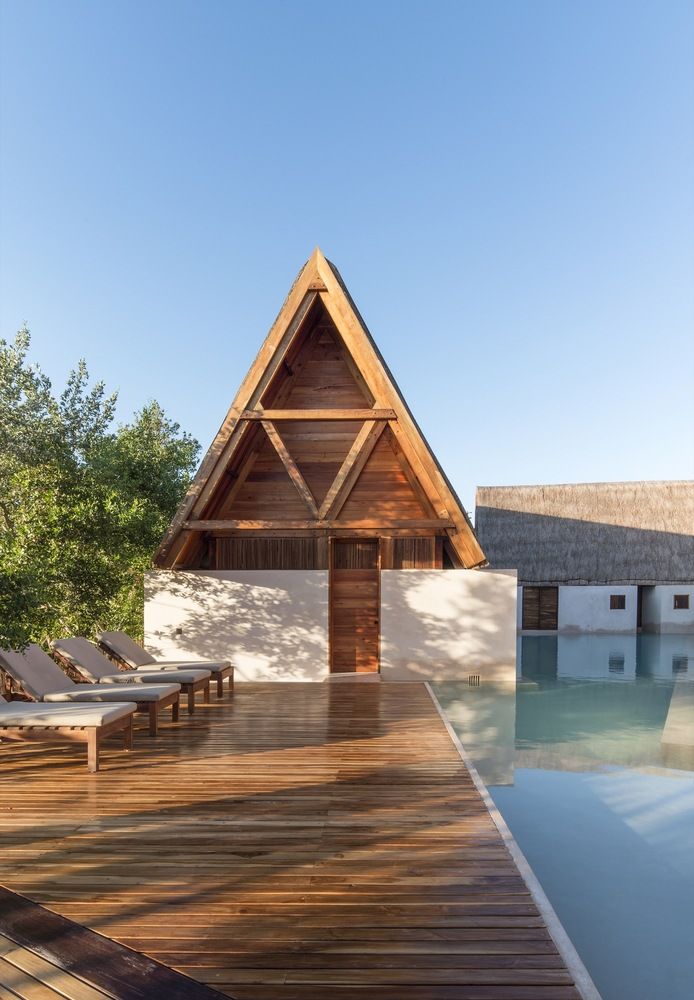
▼被荫蔽的室外空间,the sheltered outdoor place

▼客房内部,guest room interior view

▼卧室局部,bedroom detailed view
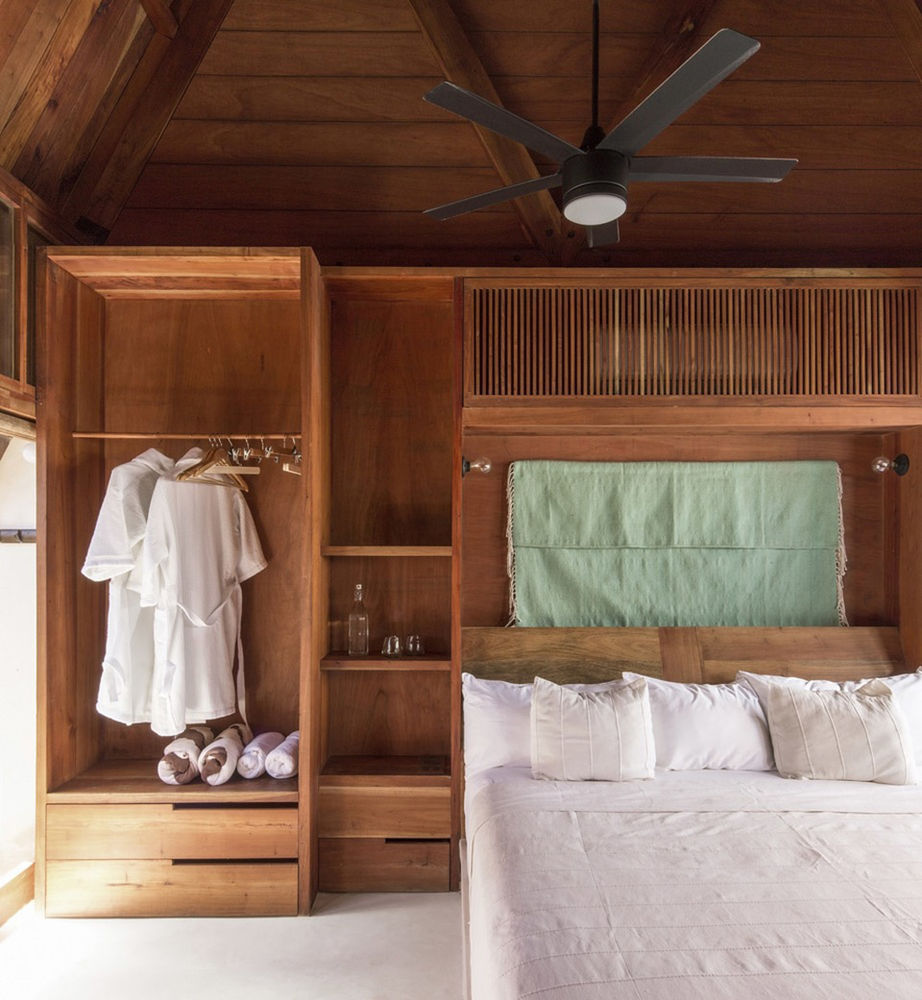
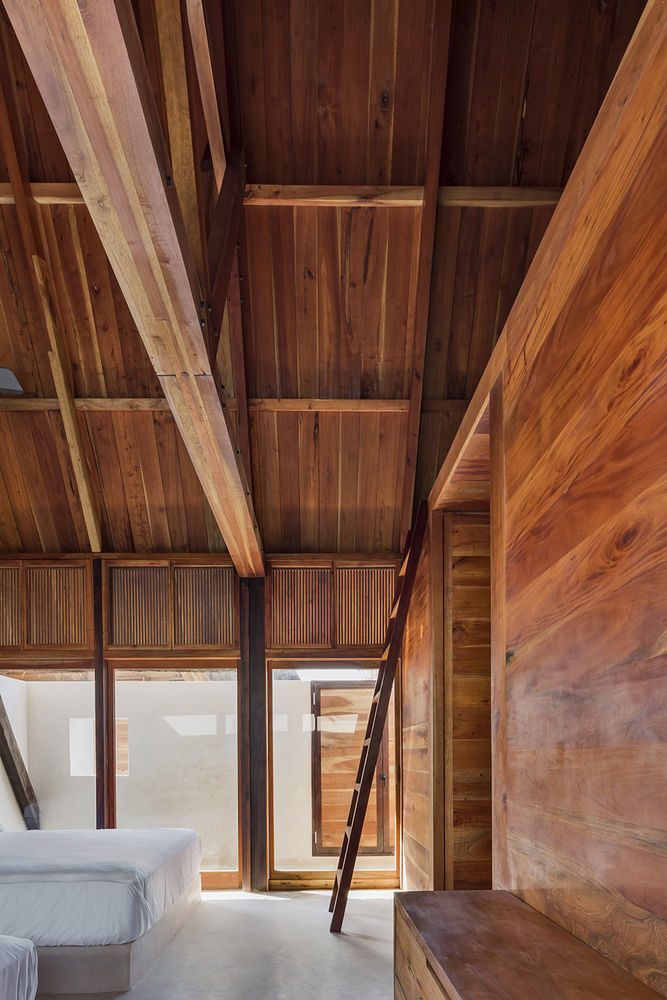
▼被水包围的房间,the room surrounded by water
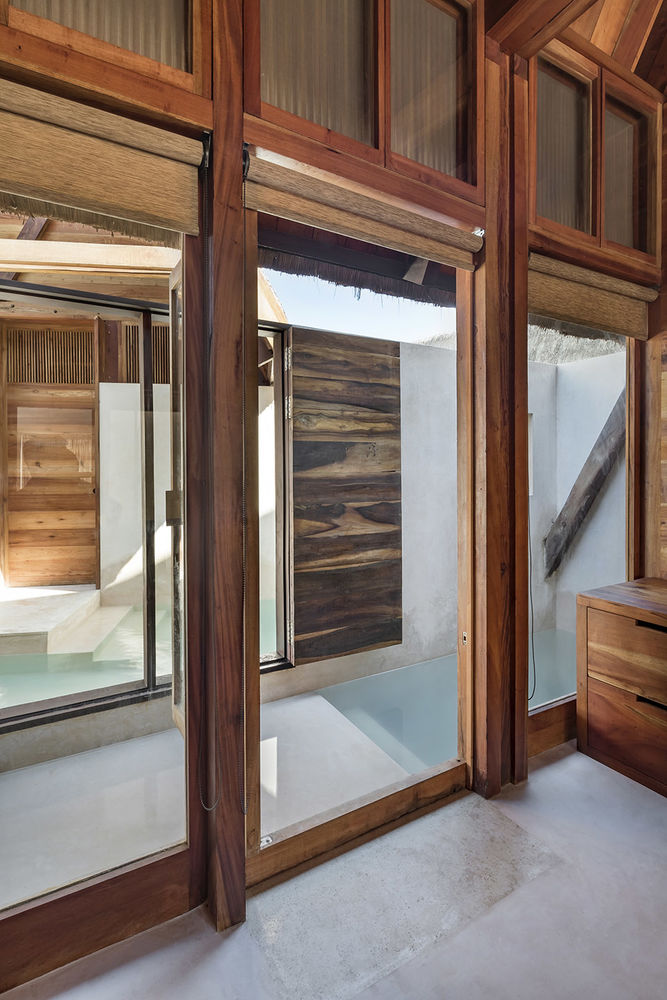
不同于通常以实用为主的做法,酒店的交通路线被转移到场地的外围。场地的中央只有潮湿而安静的水。这间小小的酒店从场地中浮现,与岛屿不稳定的环境以及正在上升的海平面进行着一场对话。从特定的角度看,它的回廊犹如被淹没了一般。在最狭窄的角落,形如龙骨的塔楼容纳了各种服务空间,人们可以从这里望见红树林沼泽和界定酒店场地的两片水域。
Instead of the simple, pragmatic—and habitual—placing of circulation routes between the rooms, the walkways are shifted to the perimeter of the site. The heart of the project can only be inhabited wet and preferably in repose. The small hotel emerges from the site to negotiate with rising sea levels on an unstable island; or it anticipates this condition with its drowned cloister, depending on the viewpoint. At the narrowest corner of the project, like a keel, a tower accommodates the services while providing a viewpoint over the mangrove swamp to the two water bodies that demarcate this strip of land we call Holbox.
▼小屋外观,exterior view
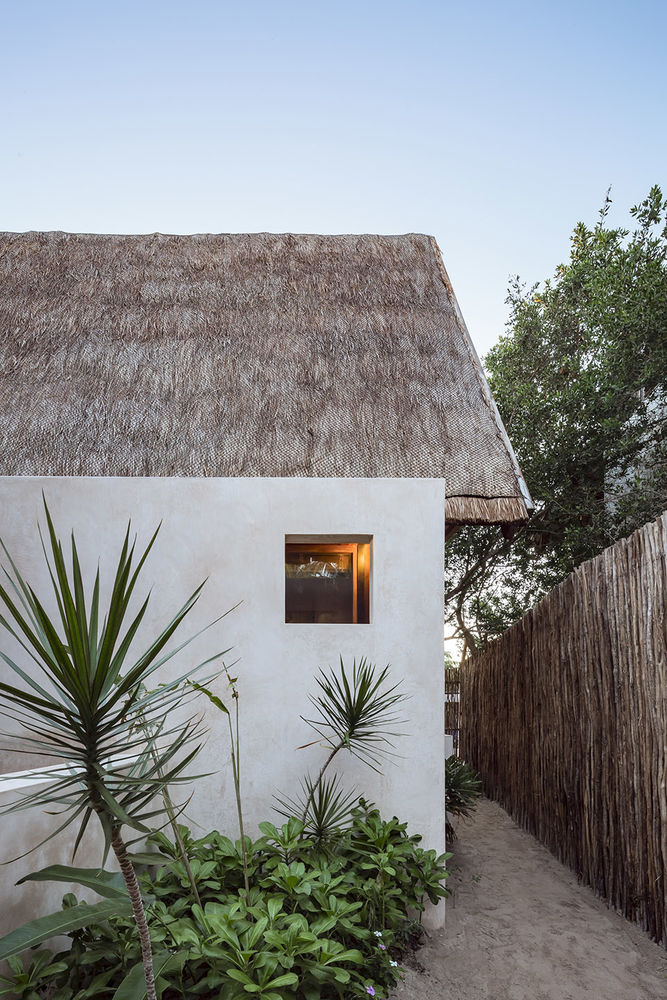
▼交通路线设置在场地的外围,the walkways are shifted to the perimeter of the site
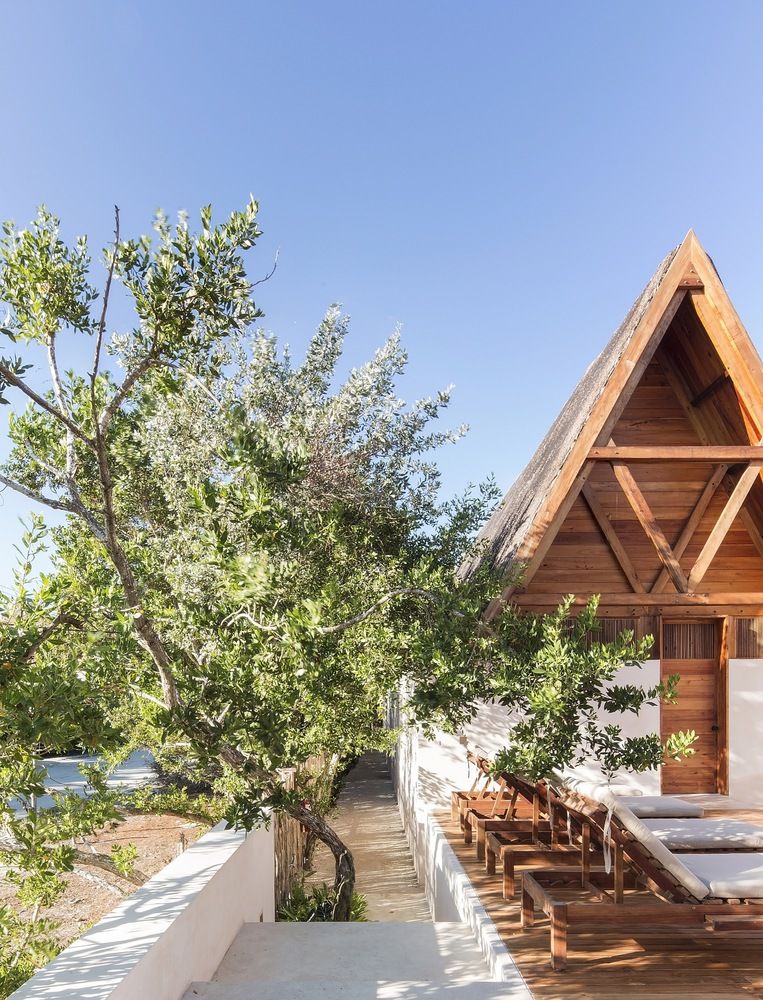
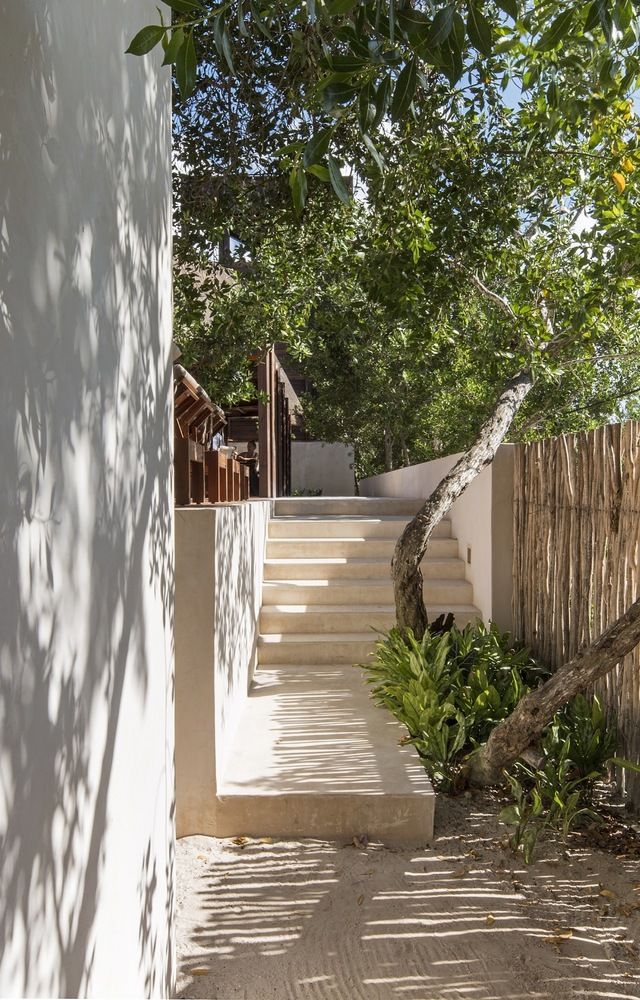
▼公共区域,public area
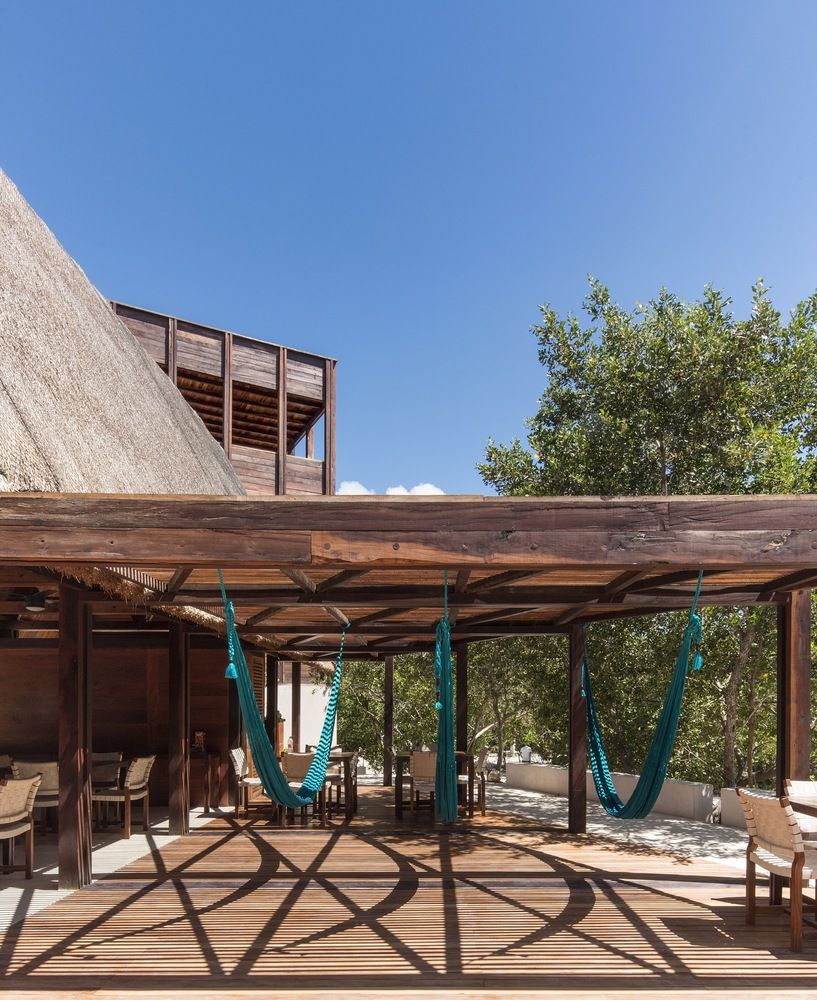
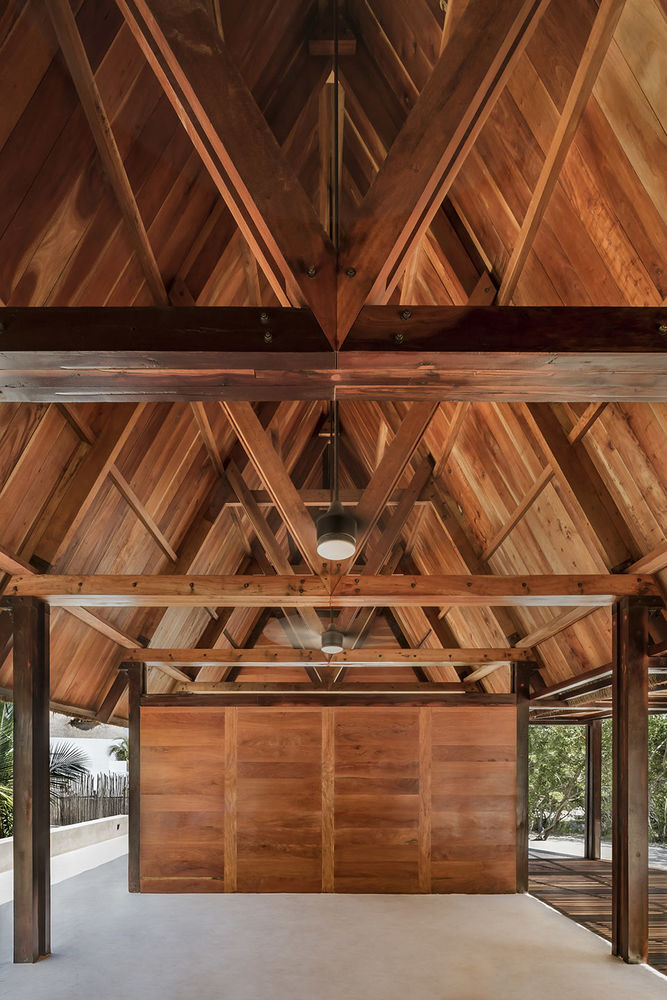
▼吧台,bar
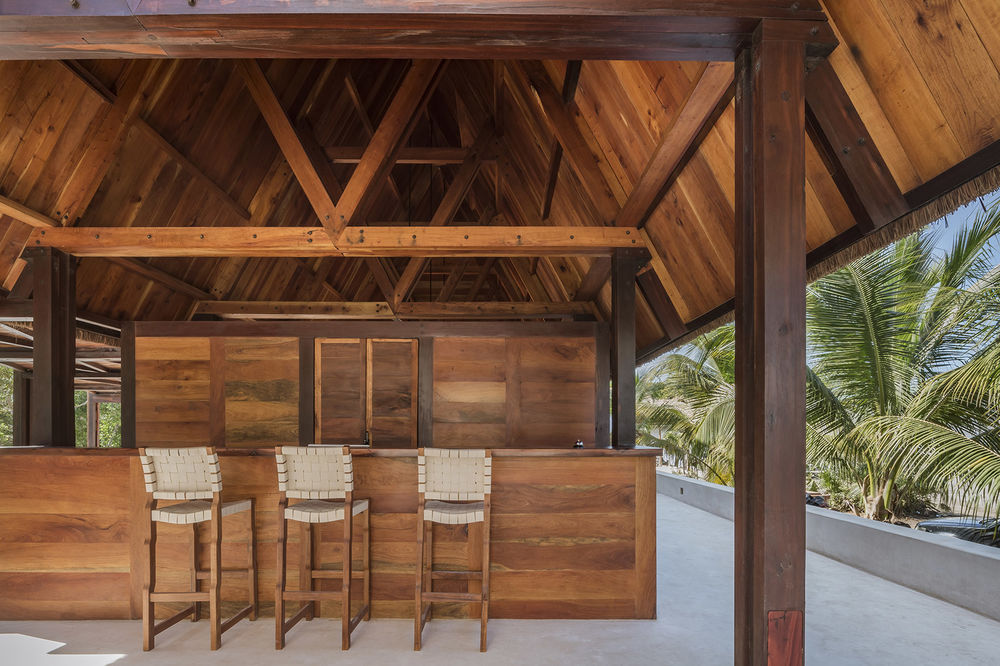
▼餐厅,dining room
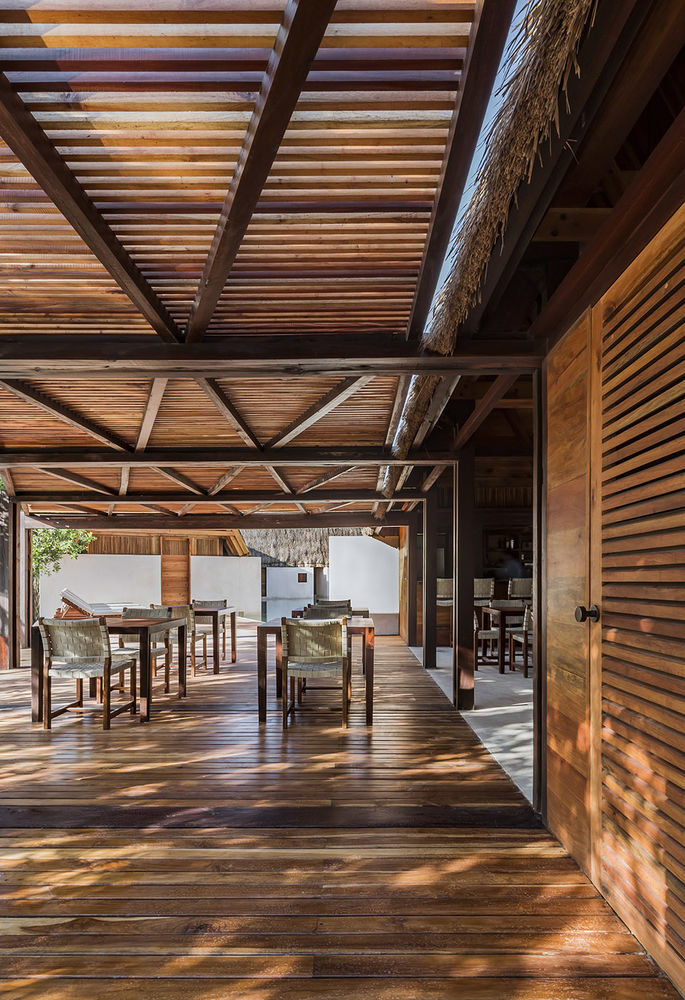
▼从平台望向塔楼,view to the tower from the deck
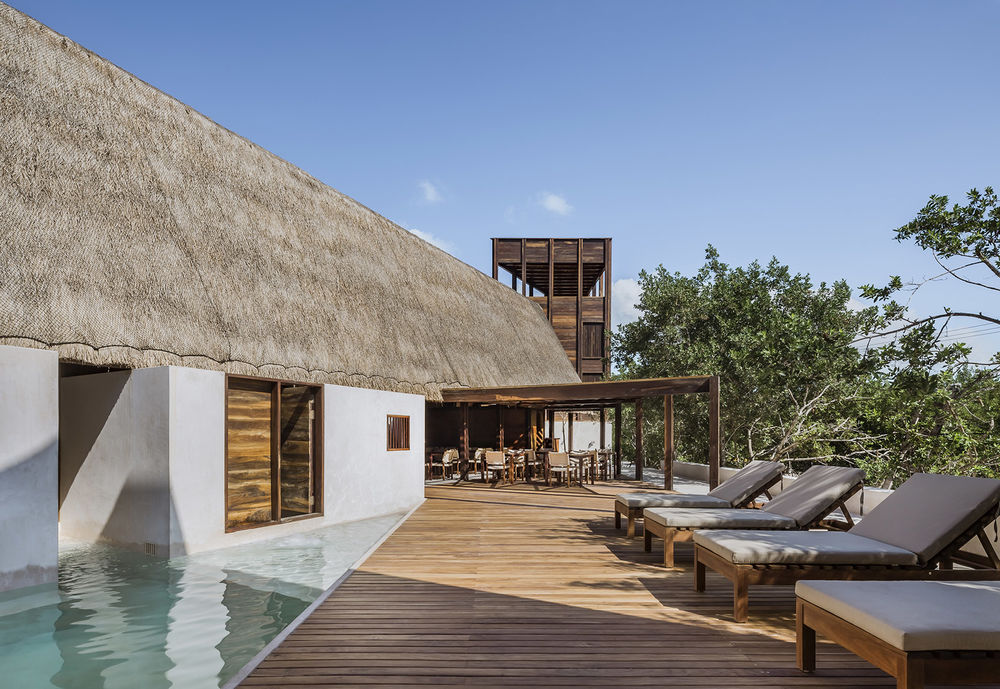
▼从走道望向塔楼,view to the tower from the pathway
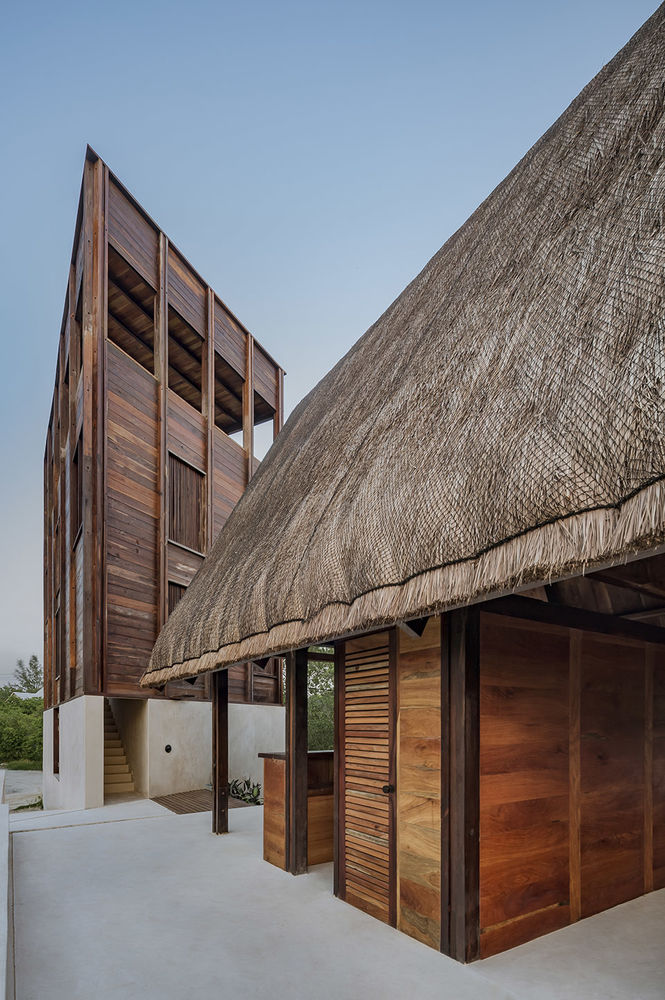
▼塔楼景观,view from the tower
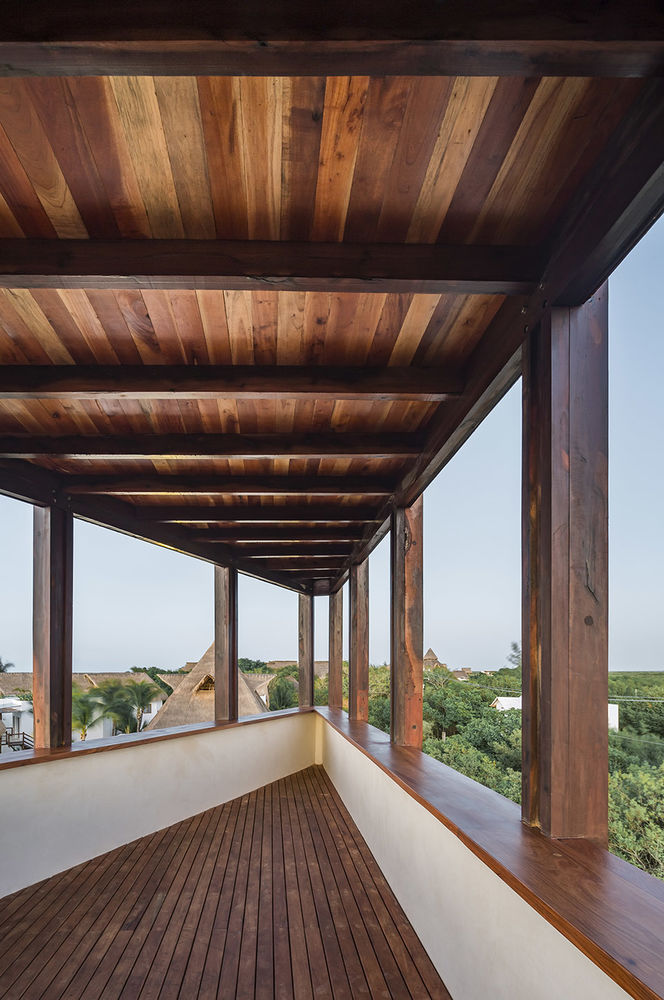
▼夜景,night view
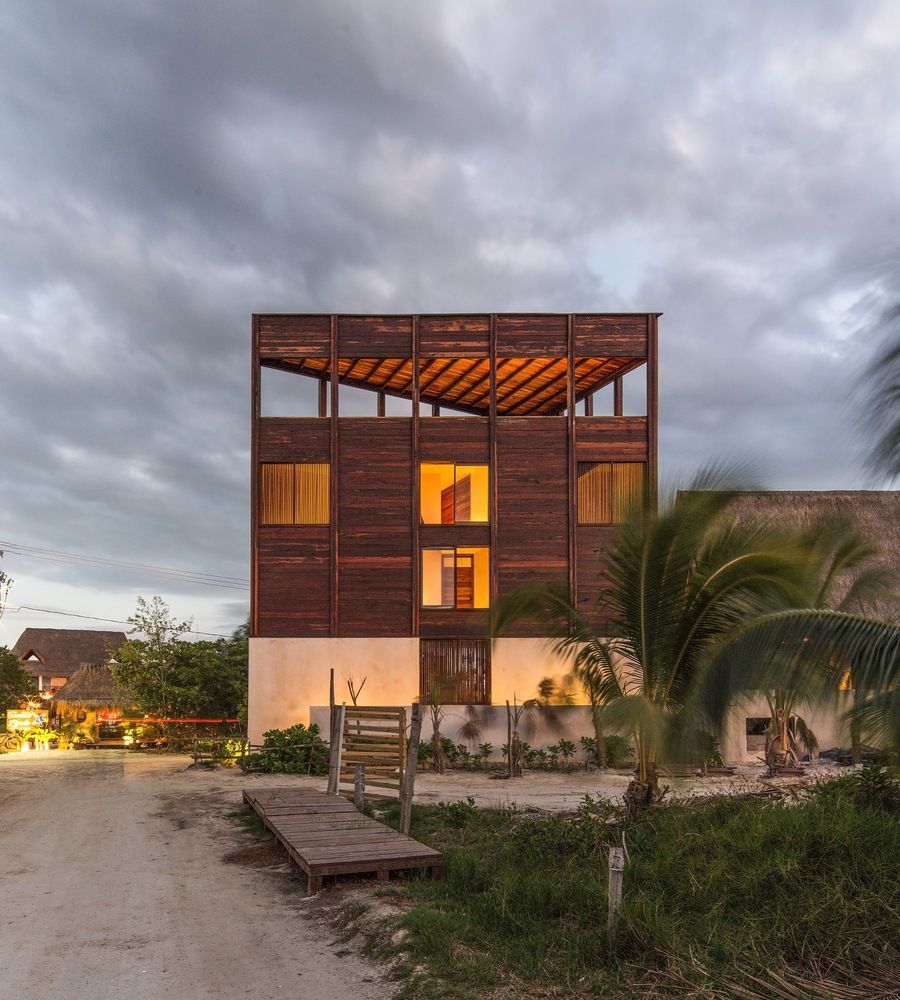
Photo credits: Adlai Pulido; César Béjar
